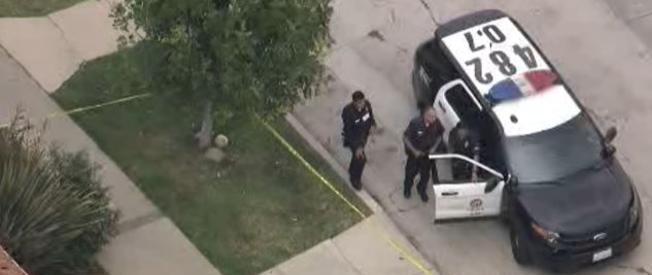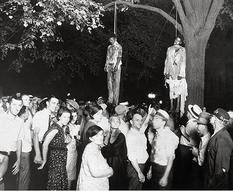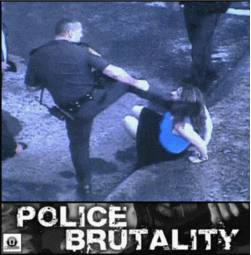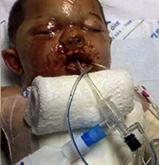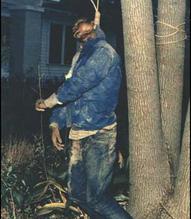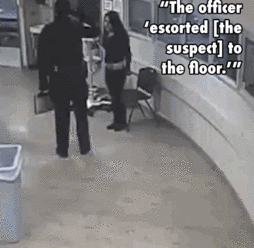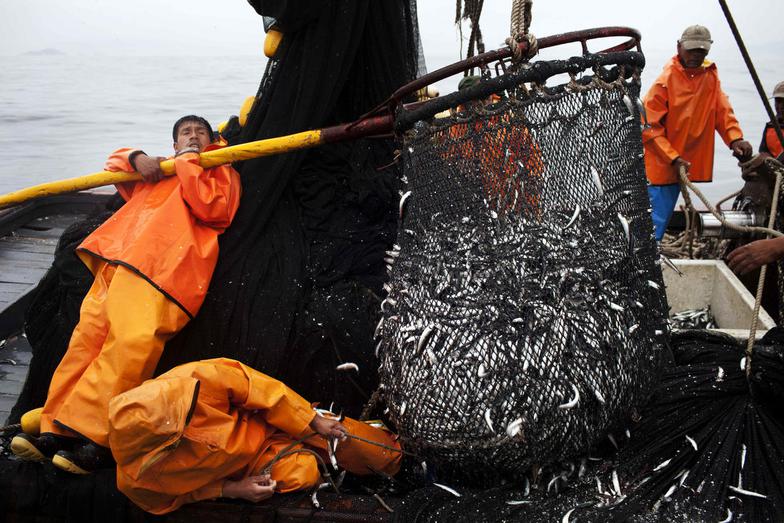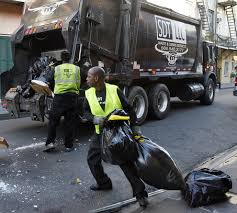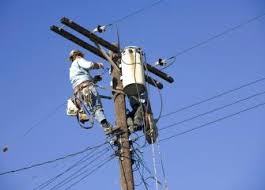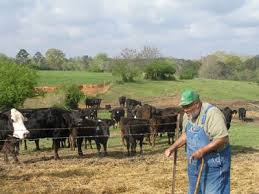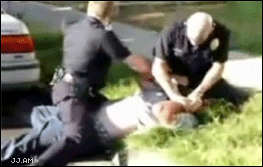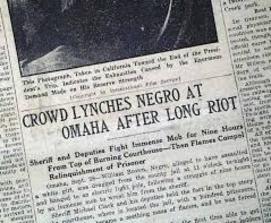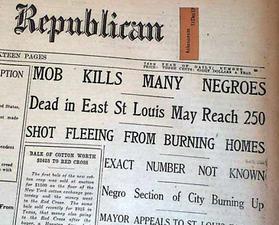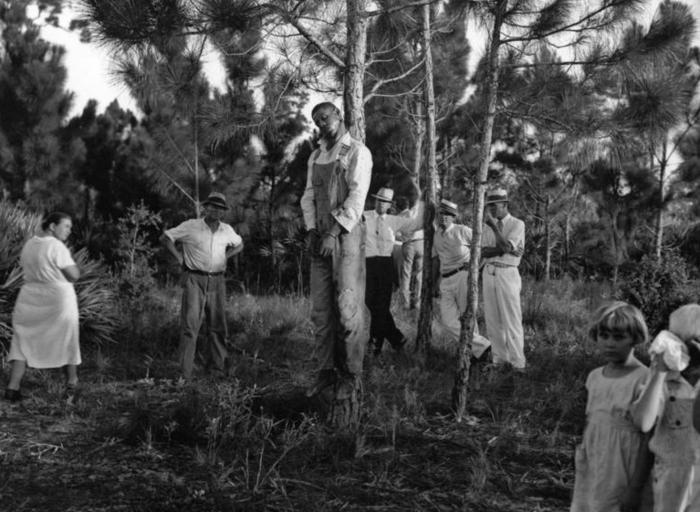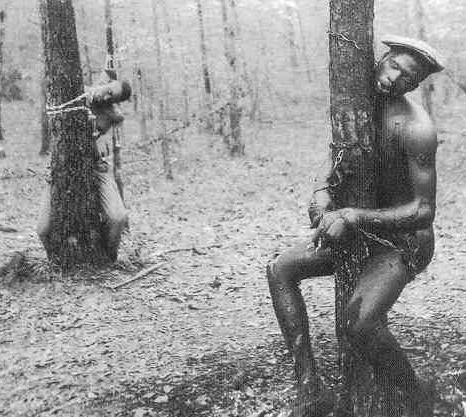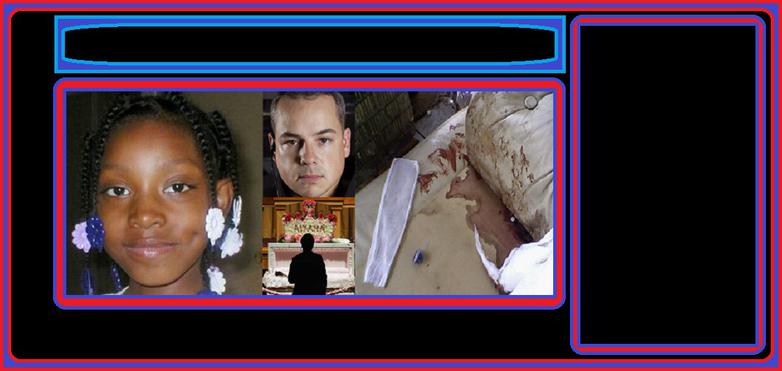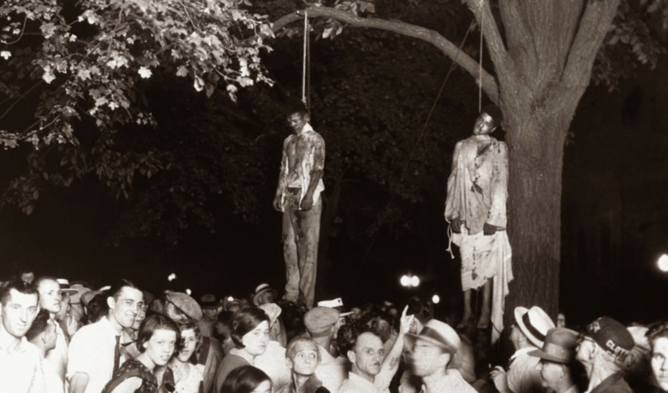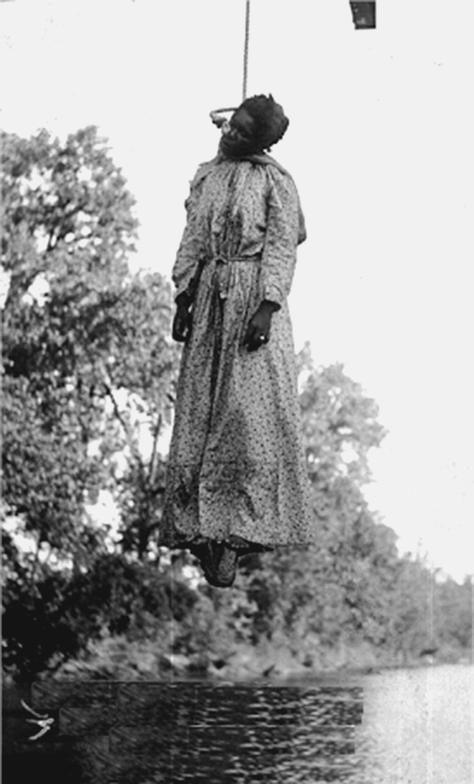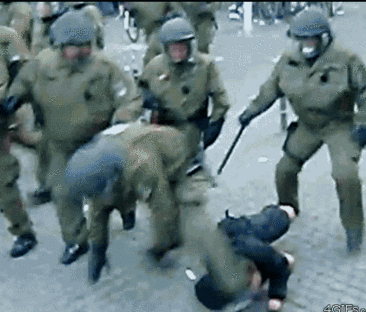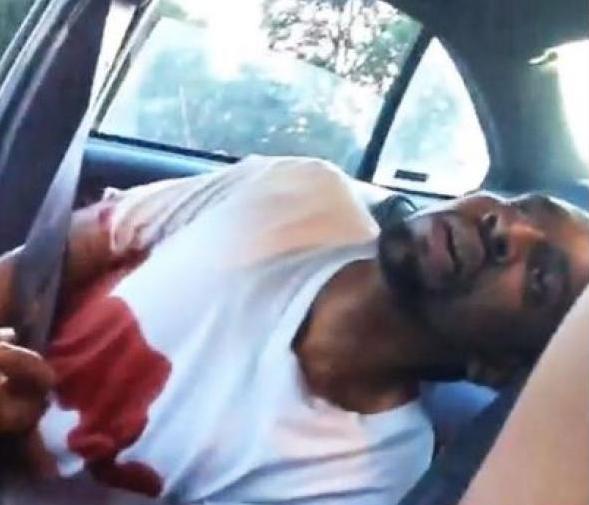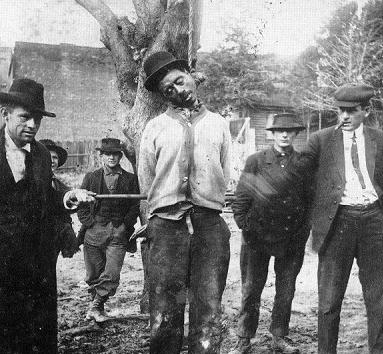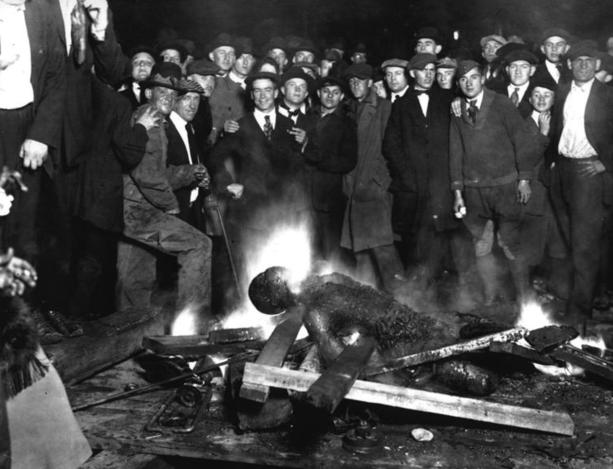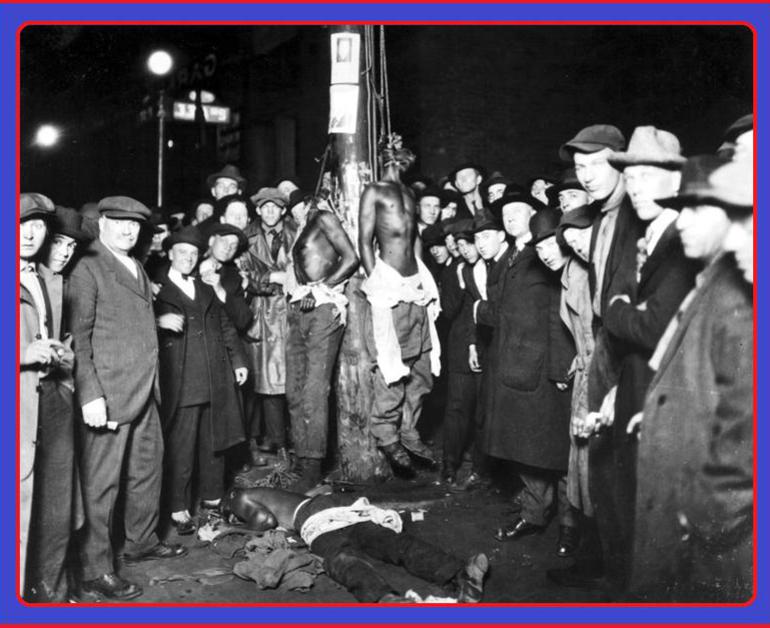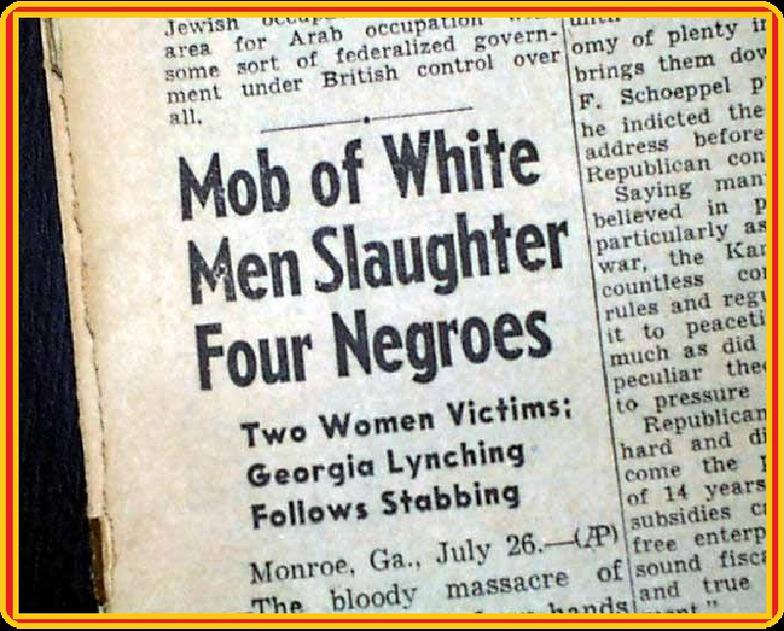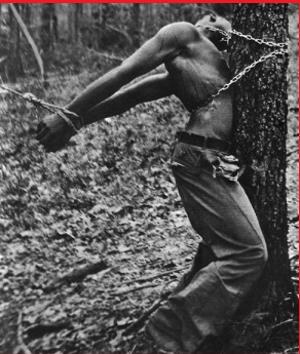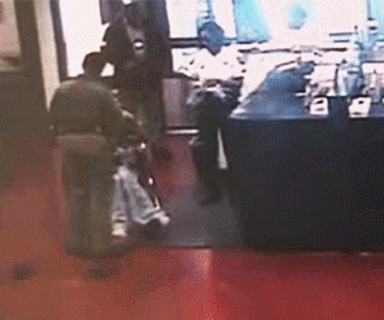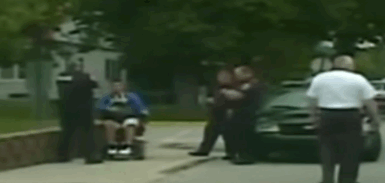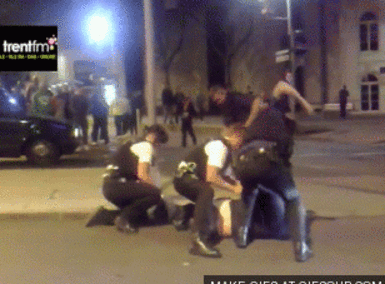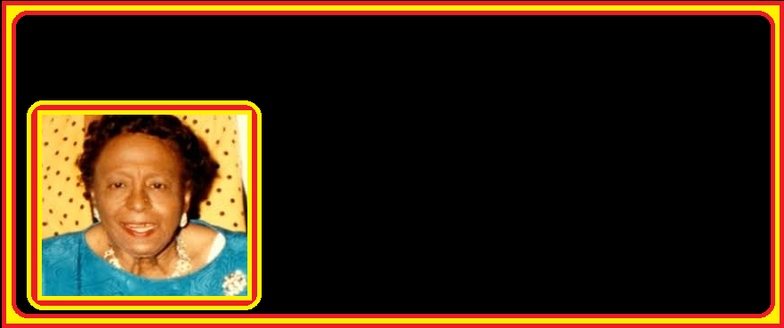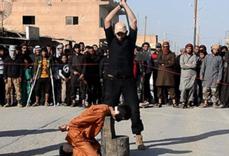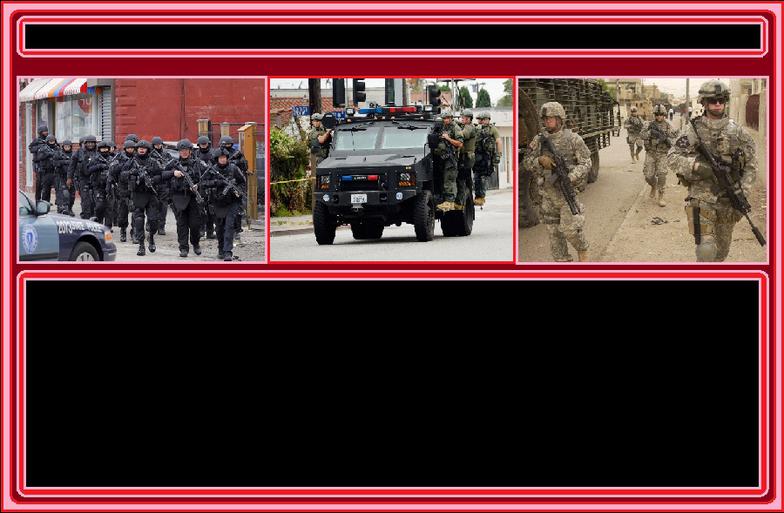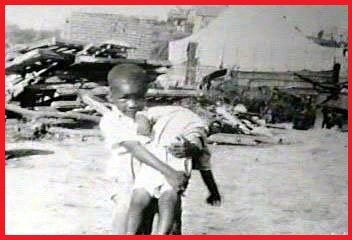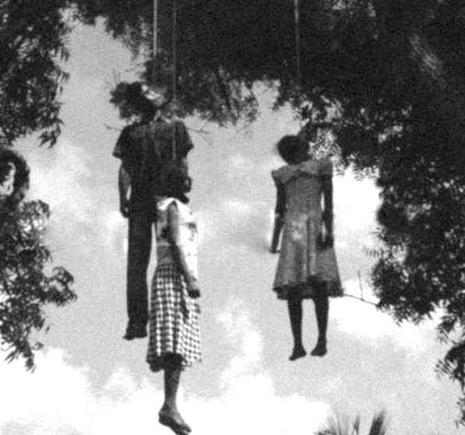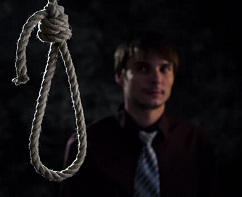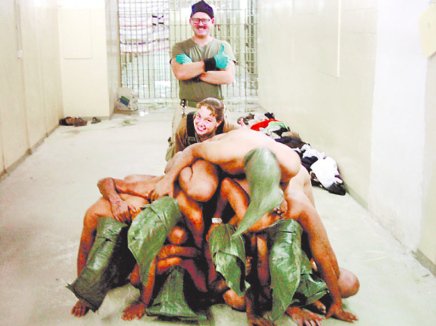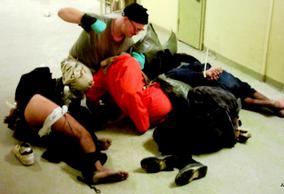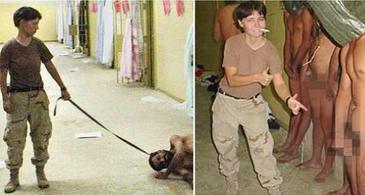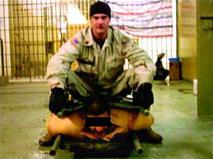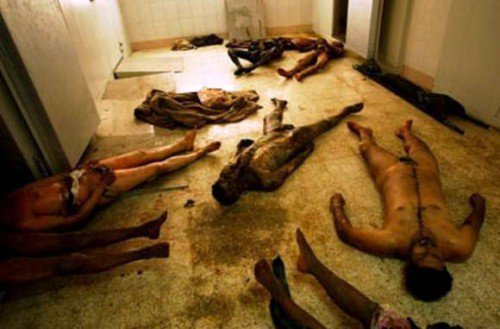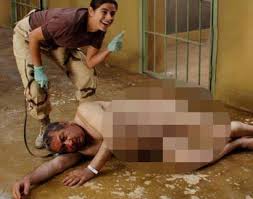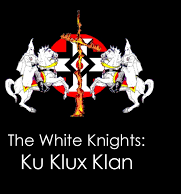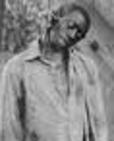Donate
Donate
Donate
Donate
I Believe That Every Single One Of Us,Has A Responsibility To Get Involved In Trying To Make A Difference In The World. Our Generation Faces Many Challenges, Some Of Which Were Passed On To Us By The Past Generations, But It's Up To Us To Find Solutions Today So That We Don't Keep Passing Our Problems On.Each One Of Us Can Make A Difference. Together We Make Change.
African American Refugee Immured American Genocide Mr.H לוחם של אלוהים
אלוהים אנא שמור על
עמך עתיק
Donate
Design and written by
Mr Michael L Hubbard
1.We are requested a centralized and federally operated up-to-date police misconduct tracking systems 2.Teaching the truth about America's History (Not His-Story) and the true treatment of people of color in America's History 3. Giving psychological aid to people of color who are suffering from Post-Traumatic Stress Disorder,because of their treatment by law enforcement and media coverage 4. Restoring voting rights to people of color who were targeted by the so called war on drugs,that has directly affected the voting power of the Afro-American 5. Requesting that we are allow to appear before the United Nations and International Court of Justice,at The Hague 6.We are asking that you sign a petition asking for relief from the United Nations ,for the relentless and unyielding genocide actions against the Afro-Americans and other people of color by the United States Government 7. Reforming the Laws that are designed to incarcerate people of color 8.We need a national dialog about amending the 13th Amendment. Current implications of the punishment clause 9. We need a Government investigation on why Police arrest black Americans for drug crimes at twice the rate of whites, according to federal data, despite the fact that whites use drugs at comparable rates and sell drugs at even higher rates 10.
PART OF THE AMERICAN RAINBOW MOBILE MUSEUM FAMILY
Donate
Donate
Donate
Donate
Donate
Donate
Donate
Donate
Donate
Donate
Donate
Donate
Donate
Donate
Donate
 | ||||
Aircraft accident
Automobile accident
Bicycle accident
Bomb
Electrocuted
Fall
Fire
Gunfire
Gunfire (accidental)
Heart attack
Heat exhaustion
Motorcycle accident
Struck by streetcar
Struck by train
Struck by vehicle
Train accident
Training accident
Vehicle pursuit
Vehicular assault
Total
Since the establishment of the Los Angeles Police Department, 205 officers have died in the line of duty.In its long history.
The first specific Los Angeles police force was founded in 1853 as the Los Angeles Rangers,The first paid force was created in 1869, when six officers were hired to serve under City Marshal William C. Warren.
From 1853 T0 2015 In 162 Years 205 Police Officers Have Died In The Line Of Duty
Keep In Mind All Los Angeles Police Officers, Who Die No Matter The Reason Are Considered To Have Died In The Line Of Duty
In The Black Community ,Cops Lives Matter And Here's The Proof
In The Police Culture Black Lives Don't Matter And Here's The Proof
Police Lives Matter In The Black Community
Black Lives Don't Matter In The Police Community
In Less Than 15 Years 589 Unarmed, In Almost Every Case, Black Men, Women And Children Have Died At The Hands Of Law Enforcement Officers. The LAPD Lost 205 Officers In 146 Years, And When You Remove Those Officers Who Died In Auto Accidents, Heart Attacks, Friendly Gunfire, Training Exercise And Helicopter Accidents, The Number Of Officers Killed In Felonious Assaults Drops To Less Than 100. In 15 Years 589, Black Men, Women And Children, Have Been Killed By Law Enforcement Officers, Who Should Be Afraid Of Whom ? 100 Police Officers Have Died In Felonious Assaults In 146 Years .589 Black, Unarmed Citizens Have Died In 15 Years, You Do The Math.
Felonious Assaults
William C. Warren City Marshal/Police Chief
City Marshal/Police Chief —
— 8 years
8 years 1870-10-31
1870-10-31 —
— Gunfire
Gunfire [A][10]
[A][10]
Clyde A. May Policeman
Policeman —
— 1 year
1 year 1907-02-28
1907-02-28 27
27 Gunfire
Gunfire L/D[11]
L/D[11]
Patrick H. Lyons Policeman
Policeman —
— 4 months
4 months 1907-11-30
1907-11-30 30
30 Gunfire
Gunfire [12]
[12]
Walter H. Auble Captain
Captain —
— 21 years
21 years 1908-09-09
1908-09-09 47Gunfire
47Gunfire [13]
[13]
David Brooks Policeman
Policeman —
— —
— 1910-04-08
1910-04-08 —
— Gunfire
Gunfire
Arthur B. Crusey Policeman
Policeman —
— —
— 1911-05-25
1911-05-25 —Gunfire
—Gunfire
Floyd C. Eiler Policeman
Policeman —
— —
— 1911-12-25
1911-12-25 —
— Gunfire
Gunfire
Robert V. Murray Policeman
Policeman —
— —
— 1914-09-23
1914-09-23 —Gunfire
—Gunfire
John Francis Toolen Sergeant
Sergeant —
— 9 years
9 years 1915-10-19
1915-10-19 40
40 Gunfire
Gunfire [14][15]
[14][15]
J.E. Browning Detective Lieutenant
Detective Lieutenant —
— —
— 1915-11-29
1915-11-29 —
— Gunfire
Gunfire
Thomas J. Kronschnable Policeman
Policeman —
— 12 years
12 years 1916-12-15
1916-12-15 37
37 Gunfire
Gunfire [17][18]
[17][18]
P.J. Downey Policeman
Policeman —
— —
— 1919-02-18
1919-02-18 —
— Gunfire
Gunfire
Donald C. Hathaway Policeman
Policeman —
— —
— 1920-05-24
1920-05-24 —
— Gunfire
Gunfire
Harry Clester Policeman
Policeman —
— —
— 1921-12-06
1921-12-06 —
— Gunfire
Gunfire 1
1
William L. Brett Policeman
Policeman —
— —
— 1921-12-06
1921-12-06 —
— Gunfire
Gunfire 1
1
Charles P. Williams Policeman
Policeman 567
567 3 years
3 years 1923-01-13
1923-01-13 35
35 Gunfire
Gunfire [C][19]
[C][19]
Arthur "Archie" Cruse Policeman
Policeman —
— —
— 1923-01-22
1923-01-22 —
— Gunfire
Gunfire
Glenn E. Bond Policeman
Policeman —
— —
— 1924-02-20
1924-02-20 —
— Gunfire
Gunfire
Edward E. Wilhoit Policeman
Policeman —
— —
— 1924-08-20
1924-08-20 36
36 Gunfire
Gunfire
Frank E. Corley Policeman
Policeman —
— —
— 1924-08-24
1924-08-24 —
— Gunfire
Gunfire O/D
O/D
Wylie E. Smith Policeman
Policeman —
— —
— 1925-08-22
1925-08-22 —
— Gunfire
Gunfire
Herbert Klade Policeman
Policeman —
— —
— 1926-02-08
1926-02-08 29
29 Gunfire
Gunfire
Carl Drake Policeman
Policeman —
— —
— 1926-02-23
1926-02-23 —
— Gunfire (accidental)
Gunfire (accidental)
James M. Miller Policeman
Policeman —
— —
— 1926-03-14
1926-03-14 —
— Gunfire
Gunfire
Parley L. Bennett Policeman
Policeman —
— 2 years, 6 months
2 years, 6 months 1927-01-25
1927-01-25 33
33 Gunfire
Gunfire
John Volberg Wicks Policeman
Policeman —
— 3 years
3 years 1927-03-23
1927-03-23 27
27 Gunfire
Gunfire L/D
L/D
James H. Carter Policeman
Policeman —
— —
— 1928-03-28
1928-03-28 36
36 Gunfire
Gunfire
John M. Brinnegar Policeman
Policeman —
— —
— 1928-09-29
1928-09-29 36
36 Gunfire
Gunfire
James C. Costello Policeman
Policeman —
— —
— 1930-03-31
1930-03-31 27
27 Gunfire
Gunfire
Peter Muller Jr. Policeman
Policeman —
— 10 years
10 years 1930-04-13
1930-04-13 —
— Gunfire
Gunfire
Vern A. Brindley Policeman
Policeman —
— —
— 1930-05-10
1930-05-10 —
— Gunfire
Gunfire
James L. Beck Policeman
Policeman —
— —
— 1931-01-28
1931-01-28 —
— Gunfire
Gunfire L/D
L/D
Hugh A. Crowley Policeman
Policeman —
— —
— 1932-01-11
1932-01-11 —
— Gunfire
Gunfire
Paul Donath Policeman
Policeman —
— —
— 1932-04-28
1932-04-28 —
— Gunfire
Gunfire
Paul T. Lee Detective Lieutenant
Detective Lieutenant —
— —
— 1932-12-20
1932-12-20 —
— Gunfire
Gunfire
Russell A. Leidy Policeman
Policeman —
— —
— 1934-07-24
1934-07-24 32
32 Gunfire
Gunfire
Owen D. Yancy Policeman
Policeman —
— —
— 1935-10-20
1935-10-20 —
— Gunfire
Gunfire
Clyde Pritchett Policeman
Policeman 97
97 12 years, 6 months
12 years, 6 months 1936-02-17
1936-02-17 42
42 Gunfire
Gunfire WoF[20]
WoF[20]
George C. Howard Lieutenant
Lieutenant —
— —
— 1938-05-22
1938-05-22 —
— Gunfire
Gunfire
Lee N. Bunch Detective
Detective 277
277 —
— 1942-03-08
1942-03-08 45
45 Gunfire
Gunfire [21]
[21]
Mario V. Deiro Policeman
Policeman 496
496 —
— 1942-12-31
1942-12-31 31
31 Gunfire
Gunfire
Norbert John Huseman Policeman
Policeman 7425
7425 —
— 1945-12-31
1945-12-31 33
33 Gunfire
Gunfire L/D
L/D
Jack W. Harris Policeman
Policeman 2650
2650 —
— 1946-02-01
1946-02-01 33
33 Gunfire
Gunfire L/D
L/D
Walter H. Kesterson Policeman
Policeman 1125
1125 18 years
18 years 1946-02-04
1946-02-04 51
51 Gunfire
Gunfire MoV[D][22][23][24][25]
MoV[D][22][23][24][25]
George Booker Mogle Reserve Policeman
Reserve Policeman —
— —
— 1946-08-07
1946-08-07 44
44 Gunfire
Gunfire L/D[26][27]
L/D[26][27]
Frank G. Panek Policeman
Policeman 7605
7605 —
— 1947-04-04
1947-04-04 26
26 Gunfire
Gunfire
Frederick S. Wales Policeman
Policeman 3641
3641 —
— 1947-10-07
1947-10-07 26
26 Motorcycle accident
Motorcycle accident
John Naccarato Jr. Policeman
Policeman 3757
3757 —
— 1947-12-05
1947-12-05 25
25 Gunfire
Gunfire
Delmer E. Cook Policeman
Policeman 3378
3378 —
— 1948-12-06
1948-12-06 31
31 Gunfire
Gunfire
J.W. Milton Detective Sergeant
Detective Sergeant 1364
1364 21 years
21 years 1949-05-16
1949-05-16 50
50 Gunfire
Gunfire
Roland E. White Policeman
Policeman 5049
5049 3 years
3 years 1950-05-11
1950-05-11 26
26 Gunfire
Gunfire L/D
L/D
Marvin Wayne Haney Sergeant
Sergeant 3969
3969 —
— 1952-02-15
1952-02-15 31
31 Gunfire
Gunfire L/D
L/D
Leo Wise Policeman
Policeman 5298
5298 —
— 1957-03-17
1957-03-17 34
34 Gunfire
Gunfire
Robert R. Christensen Policeman
Policeman 3890
3890 —
— 1957-10-14
1957-10-14 38
38 Gunfire
Gunfire
Thomas Scebbi Policeman
Policeman —
— —
— 1958-06-20
1958-06-20 24
24 Gunfire
Gunfire
Gene Tilford Nash Detective Sergeant
Detective Sergeant 5771
5771 —
— 1958-10-20
1958-10-20 32
32 Gunfire
Gunfire
Jose L. Castellanos Detective
Detective 6517
6517 —
— 1959-03-05
1959-03-05 36
36 Gunfire
Gunfire
Charles E. Bogardus Policeman
Policeman 3860
3860 —
— 1959-04-05
1959-04-05 —
— Gunfire
Gunfire
Richard D. Kent Policeman
Policeman 7169
7169 2 years
2 years 1960-12-08
1960-12-08 30
30 Gunfire
Gunfire [28]
[28]
Sidney Riegel Policeman
Policeman 4299
4299 15 years
15 years 1961-05-06
1961-05-06 44
44 Gunfire
Gunfire
Charles Hallenbeck Policeman
Policeman 10733
10733 1 year, 5 months
1 year, 5 months 1962-07-26
1962-07-26 —
— Vehicular assault
Vehicular assault
Ian James Campbell Policeman
Policeman 10046
10046 —
— 1963-03-09
1963-03-09 31
31 Gunfire
Gunfire WoF[E][20][29]
WoF[E][20][29]
Robert M. Endler Detective
Detective 6221
6221 —
— 1964-02-01
1964-02-01 —
— Gunfire
Gunfire 3
3
Charles P. Monaghan Detective Sergeant
Detective Sergeant 6078
6078 —
— 1964-02-01
1964-02-01 —
— Gunfire
Gunfire 3
3
Gary K. McDonald Policeman
Policeman 12151
12151 11 months
11 months 1965-10-06
1965-10-06 22
22 Gunfire
Gunfire
John C. Smith Policeman M/C Officer
Policeman M/C Officer 10395
10395 —
— 1966-03-02
1966-03-02 27
27 Vehicular assault
Vehicular assault
Malcolmb Beatty Sergeant
Sergeant 12613
12613 —
— 1966-08-29
1966-08-29 23
23 Vehicular assault
Vehicular assault L/D
L/D
Larry Amberg Policeman
Policeman 10668
10668 4 years, 7 months
4 years, 7 months 1966-08-30
1966-08-30 27
27 Helicopter accident
Helicopter accident
Keith Gregory Dupuis Policeman
Policeman 10657
10657 6 years
6 years 1966-10-27
1966-10-27 27
27 Gunfire
Gunfire L/D
L/D
Roger R. Warren Policeman
Policeman 433
433 1 month
1 month 1967-05-08
1967-05-08 23
23 Gunfire
Gunfire
Oscar J. Bryant Policeman
Policeman 12111
12111 4 years
4 years 1968-02-10
1968-02-10 26
26 Gunfire
Gunfire
Gary W. Murakami Policeman
Policeman 14037
14037 2 days
2 days 1968-09-09
1968-09-09 26
26 Gunfire
Gunfire [30]
[30]
Robert J. Cote Policeman
Policeman 13991
13991 1 year, 3 months
1 year, 3 months 1969-07-31
1969-07-31 —
— Gunfire
Gunfire WoF[20]
WoF[20]
Jerry Maddox Policeman
Policeman 14317
14317 —
— 1969-08-19
1969-08-19 —
— Gunfire
Gunfire
Earl L. Riddick Policeman
Policeman 14169
14169 2 years
2 years 1970-04-23
1970-04-23 29
29 Gunfire
Gunfire O/D[31]
O/D[31]
Phillip J. Riley Policeman
Policeman 14745
14745 —
— 1971-10-21
1971-10-21 —
— Gunfire
Gunfire
Fred H. Early Policeman
Policeman 12552
12552 —
— 1973-03-23
1973-03-23 31
31 Gunfire
Gunfire O/D-L/D
O/D-L/D
Charles A. Caraccilo Policeman
Policeman 10285
10285 14 years
14 years 1973-06-21
1973-06-21 35
35 Gunfire
Gunfire
Gerald Wayne Sawyer Detective
Detective 11797
11797 —
— 1973-11-06
1973-11-06 32
32 Gunfire
Gunfire
Michael Lee Edwards Officer
Officer 15444
15444 5 years
5 years 1974-05-11
1974-05-11 25
25 Gunfire
Gunfire
Zlato Nicholi Sintic Officer
Officer 15485
15485 9 years
9 years 1976-02-12
1976-02-12 33
33 Gunfire
Gunfire
Jeffrey B. Lindenberg Officer
Officer 14388
14388 7 years
7 years 1976-06-11
1976-06-11 30
30 Helicopter accident
Helicopter accident
Raymond Earl Hicks Officer
Officer 12035
12035 12 years
12 years 1976-08-17
1976-08-17 35
35 Gunfire
Gunfire
David Earle Bailey Officer
Officer 21939
21939 —
— 1977-10-21
1977-10-21 —
— Gunfire
Gunfire
James J. Choquette Officer
Officer 14818
14818 10 years
10 years 1979-08-02
1979-08-02 32
32 Vehicular assault
Vehicular assault
David B. Kubly Officer
Officer 22123
22123 1 year, 6 months
1 year, 6 months 1979-09-27
1979-09-27 23
23 Gunfire
Gunfire
Jack Hayden Officer
Officer 13383
13383 —
— 1982-10-10
1982-10-10 —
— Gunfire
Gunfire O/D
O/D
Stuart S. Taira Reserve Officer
Reserve Officer R1019
R1019 —
— 1983-03-01
1983-03-01 28
28 Helicopter accident
Helicopter accident MoV[32][33]
MoV[32][33]
Paul L. Verna Officer
Officer 15086
15086 —
— 1983-06-02
1983-06-02 35
35 Gunfire
Gunfire
Arthur Ken Soo Hoo Officer
Officer 21730
21730 —
— 1983-10-29
1983-10-29 —
— Vehicular assault
Vehicular assault 5
5
William N. Wong Officer
Officer 22205
22205 —
— 1983-10-29
1983-10-29 —
— Vehicular assault
Vehicular assault 5
5
Duane Curtis Johnson Officer
Officer 23431
23431 3 years
3 years 1984-12-19
1984-12-19 27
27 Gunfire
Gunfire
Thomas C. Williams Detective
Detective 17491
17491 13 years
13 years 1985-10-31
1985-10-31 42
42 Gunfire
Gunfire O/D MoV
O/D MoV
[34][35]
Arleigh Eugene McCree Detective
Detective 12241
12241 —
— 1986-02-08
1986-02-08 —
— Explosives; Pipe bomb
Explosives; Pipe bomb 6[36][37]
6[36][37]
Ronald Lawrence Ball Officer
Officer 15323
15323 —
— 1986-02-08
1986-02-08 —
— Explosives; Pipe bomb
Explosives; Pipe bomb 6[36][37]
6[36][37]
James H. Pagliotti Officer III
Officer III 23759
23759 5 years
5 years 1987-06-22
1987-06-22 28
28 Gunfire
Gunfire
James C. Beyea Officer
Officer 25532
25532 9 months
9 months 1988-06-07
1988-06-07 24
24 Gunfire
Gunfire
Daniel Allen Pratt Officer
Officer 23800
23800 6 months
6 months 1988-09-03
1988-09-03 30
30 Gunfire
Gunfire
Norman D. Eckles Detective
Detective 16032
16032 19 years
19 years 1989-04-19
1989-04-19 42
42 Gunfire
Gunfire L/D
L/D
Kelly Key III Detective
Detective 11755
11755 9 years
9 years 1989-12-27
1989-12-27 49
49 Gunfire
Gunfire L/D
L/D
Russell Lee Kuster Detective
Detective 12884
12884 24 years, 6 months
24 years, 6 months 1990-10-09
1990-10-09 50
50 Gunfire
Gunfire O/D WoF[20]
O/D WoF[20]
Tina Frances Kerbrat Officer
Officer 27606
27606 10 months
10 months 1991-02-11
1991-02-11 34
34 Gunfire
Gunfire [F]
[F]
Edward Stefan Kislo Detective
Detective 20625
20625 18 years, 6 months
18 years, 6 months 1991-06-13
1991-06-13 50
50 Gunfire
Gunfire
Christy Lynn Hamilton Officer
Officer 30433
30433 2 months
2 months 1994-02-22
1994-02-22 45
45 Gunfire
Gunfire
Charles D. Heim Officer
Officer 24265
24265 11 years
11 years 1994-10-22
1994-10-22 33
33 Gunfire
Gunfire WoF[20]
WoF[20]
Gabriel Delgado Perez-Negron Officer
Officer 31314
31314 1 year
1 year 1995-11-04
1995-11-04 31
31 Vehicular assault
Vehicular assault
Mario Navidad Jr. Officer II
Officer II 31588
31588 1 year
1 year 1996-12-22
1996-12-22 27
27 Gunfire
Gunfire [39]
[39]
Filberto Henry Cuesta Jr. Officer II
Officer II 30753
30753 4 years
4 years 1998-08-09
1998-08-09 26
26 Gunfire
Gunfire
Brian Ernest Fenimore Brown Officer III
Officer III 32054
32054 3 years
3 years 1998-11-29
1998-11-29 27
27 Gunfire
Gunfire
George A. Rose Jr. Officer
Officer 26827
26827 3 years
3 years 2001-12-09
2001-12-09 40
40 Gunfire (accidental)
Gunfire (accidental) L/D
L/D
Ricardo Lizarraga Officer
Officer 36046
36046 2 years, 6 months
2 years, 6 months 2004-02-20
2004-02-20 30
30 Gunfire
Gunfire [43][44]
[43][44]
Randal Simmons Officer III+I
Officer III+I 22885
22885 27 years
27 years 2008-02-07
2008-02-07 51
51 Gunfire
Gunfire [48][49][50]
[48][49][50]
Chris Cortijo Officer II
Officer II 25473
25473 26 years
26 years 2014-04-09
2014-04-09 51
51 Vehicular assault
Vehicular assault L/D
L/D
Roberto C. Sanchez Officer II
Officer II 39618
39618 6 years
6 years 2014-05-03
2014-05-03 32
32 Vehicular assault
Vehicular assault
Cecil S. Bowman Policeman
Policeman —
— —
— 1911-06-08
1911-06-08 —
— Struck by train
Struck by train
James P. Wylie Policeman
Policeman —
— —
— 1911-11-27
1911-11-27 —
— Car accident
Car accident
James F. Crehan Policeman
Policeman —
— —
— 1914-03-31
1914-03-31 —
— Struck by streetcar
Struck by streetcar
Walter R. Kreps Policeman
Policeman —
— —
— 1916-03-28
1916-03-28 —
— Motorcycle accident
Motorcycle accident
Charles H. Crowe Detective
Detective —
— 8 years, 10 months
8 years, 10 months 1916-06-17
1916-06-17 39
39 Heatstroke
Heatstroke L/D
L/D
James A. Ellsworth Policeman
Policeman —
— —
— 1917-09-04
1917-09-04 —
— Car accident
Car accident
Charles E. Johnson Lieutenant
Lieutenant —
— —
— 1917-11-13
1917-11-13 —
— Fall
Fall
O.E. Barney Policeman
Policeman —
— —
— 1917-11-21
1917-11-21 —
— Fire
Fire
C.H. Wyatt Policeman
Policeman —
— —
— 1919-08-27
1919-08-27 —
— Motorcycle accident
Motorcycle accident
Joseph Romero Policeman
Policeman —
— —
— 1919-09-22
1919-09-22 —
— Car accident
Car accident
John G. Magness Policeman
Policeman —
— —
— 1920-05-21
1920-05-21 —
— Car accident
Car accident
Elijah P. Bradley Policeman
Policeman —
— —
— 1920-06-15
1920-06-15 —
— Motorcycle accident
Motorcycle accident
Frank Llewelyn Coe Policeman
Policeman —
— —
— 1921-02-11
1921-02-11 —
— Motorcycle accident
Motorcycle accident L/D[2]
L/D[2]
Roy L. Shy Detective Sergeant
Detective Sergeant —
— —
— 1922-04-08
1922-04-08 41
41 Car accident
Car accident
Matthew P. McDonagh Policeman
Policeman 468
468 3 years
3 years 1923-01-22
1923-01-22 28
28 Struck by train
Struck by train
Ralph D. Green Policeman
Policeman —
— —
— 1924-01-11
1924-01-11 —
— Car accident
Car accident
George E. Papst Policeman
Policeman —
— —
— 1924-07-27
1924-07-27 —
— Motorcycle accident
Motorcycle accident
Ralph Miover Policeman
Policeman —
— —
— 1925-04-11
1925-04-11 —
— Motorcycle accident
Motorcycle accident
Wylie E. Smith Policeman
Policeman —
— —
— 1925-08-22
1925-08-22 —
—
Arthur L. Davenport Policeman
Policeman —
— —
— 1926-05-16
1926-05-16 —
— Car accident
Car accident
Andrew J. Davilla Policeman
Policeman —
— —
— 1926-09-10
1926-09-10 —
— Motorcycle accident
Motorcycle accident
Charles M. Partin Policeman
Policeman —
— —
— 1927-01-23
1927-01-23 28
28 Motorcycle accident
Motorcycle accident
Parley L. Bennett Policeman
Policeman —
— 2 years, 6 months
2 years, 6 months 1927-01-25
1927-01-25 33
33 Gunfire
Gunfire
Judson D. Cornwall Sergeant
Sergeant —
— —
— 1927-07-07
1927-07-07 —
— Struck by vehicle
Struck by vehicle
William H. Marple Policeman
Policeman —
— —
— 1929-02-27
1929-02-27 —
— Car accident
Car accident 2
2
John M. Schomaker Policeman
Policeman —
— —
— 1929-02-27
1929-02-27 —
— Car accident
Car accident 2
2
Lewis Long Policeman
Policeman —
— —
— 1929-04-18
1929-04-18 —
— Car accident
Car accident
Henry C. Jackson Policeman
Policeman —
— —
— 1931-03-01
1931-03-01 —
— Motorcycle accident
Motorcycle accident
W. Anderson Policeman
Policeman —
— —
— 1933-10-21
1933-10-21 —
— Car accident
Car accident
Alfred C. Madon Policeman
Policeman —
— —
— 1935-06-16
1935-06-16 —
— Motorcycle accident
Motorcycle accident
E.A. Barber Sergeant
Sergeant —
— —
— 1936-11-09
1936-11-09 —
— Struck by train
Struck by train
Donald C. Tisdale Policeman
Policeman —
— —
— 1937-03-10
1937-03-10 —
— Motorcycle accident
Motorcycle accident
Neville Batt Policeman
Policeman —
— 14 years
14 years 1937-07-09
1937-07-09 47
47 Struck by train
Struck by train L/D
L/D
E.J. Bickel Policeman
Policeman —
— —
— 1937-08-30
1937-08-30 —
— Car accident
Car accident
Walsteen E. Long Policeman
Policeman —
— 18 years
18 years 1938-01-18
1938-01-18 45
45 Struck by vehicle
Struck by vehicle
Weymouth T. Lockridge Policeman
Policeman —
— —
— 1938-09-09
1938-09-09 —
— Car accident
Car accident
Harry G. Emsley Lieutenant
Lieutenant —
— —
— 1939-01-12
1939-01-12 46
46 Motorcycle accident
Motorcycle accident
William G. Brown Policeman
Policeman —
— —
— 1939-09-13
1939-09-13 —
— Motorcycle accident
Motorcycle accident
Orley O. Sanner Policeman
Policeman —
— —
— 1940-05-26
1940-05-26 44
44 Electrocution (accidental)
Electrocution (accidental)
F.E. Stansell Policeman
Policeman 1959
1959 —
— 1941-07-15
1941-07-15 43
43 Car accident
Car accident
George R. Colvin Policeman
Policeman 405
405 16 years
16 years 1941-08-18
1941-08-18 50
50 Motorcycle accident
Motorcycle accident L/D
L/D
Joseph E. Daniels Policeman
Policeman 469
469 —
— 1941-09-24
1941-09-24 39
39 Car accident
Car accident
W.G. Chamberlain Policeman
Policeman 2472
2472 —
— 1941-12-25
1941-12-25 27
27 Motorcycle accident
Motorcycle accident
James A. Summers Policeman
Policeman 2015
2015 —
— 1944-03-04
1944-03-04 49
49 Heart attack
Heart attack L/D
L/D
Charles H. Bridgeman Sergeant
Sergeant 232
232 —
— 1945-03-16
1945-03-16 43
43 Gunfire (accidental)
Gunfire (accidental)
Isaac L. Lankford Sergeant
Sergeant 2440
2440 —
— 1945-10-14
1945-10-14 31
31 Motorcycle accident
Motorcycle accident
Frederick S. Wales Policeman
Policeman 3641
3641 —
— 1947-10-07
1947-10-07 26
26 Motorcycle accident
Motorcycle accident
Glenn H. Clark Policeman
Policeman 3277
3277 —
— 1950-07-08
1950-07-08 28
28 Motorcycle accident
Motorcycle accident
J.B. Vose Policeman
Policeman 5043
5043 —
— 1950-10-21
1950-10-21 27
27 Motorcycle accident
Motorcycle accident
Thomas J. Kennedy Policeman
Policeman 4602
4602 —
— 1951-04-05
1951-04-05 33
33 Motorcycle accident
Motorcycle accident
Chester M. Gilderhaus Policeman
Policeman 4230
4230 —
— 1951-09-30
1951-09-30 35
35 Motorcycle accident
Motorcycle accident
James D. Kennard Policeman
Policeman 2942
2942 —
— 1952-03-03
1952-03-03 39
39 Car accident
Car accident
Floyd F. Hassler Policeman
Policeman 3975
3975 —
— 1952-08-24
1952-08-24 32
32 Motorcycle accident
Motorcycle accident
John E. Dunphy Policeman
Policeman 4350
4350 —
— 1954-06-22
1954-06-22 31
31 Car accident
Car accident
Clay N. Hunt Detective
Detective 1007
1007 —
— 1955-02-22
1955-02-22 42
42 Car accident
Car accident
Harry M. Miller Policeman
Policeman 4227
4227 10 years
10 years 1956-09-07
1956-09-07 36
36 Motorcycle accident
Motorcycle accident
Michael Joseph McAndrews Policeman
Policeman —
— 11 years
11 years 1957-01-13
1957-01-13
 Heart attack
Heart attack
Joseph W. Bennett Policeman
Policeman 7044
7044 —
— 1958-07-26
1958-07-26 35
35 Car accident
Car accident
Gilbert Reyes Policeman
Policeman 5787
5787 —
— 1959-05-04
1959-05-04 —
— Car accident
Car accident
Robert Sweet Policeman
Policeman 7488
7488 —
— 1959-12-26
1959-12-26 —
— Motorcycle accident
Motorcycle accident
Martin Parker Policeman
Policeman 6935
6935 —
— 1960-09-14
1960-09-14 —
— Motorcycle accident
Motorcycle accident
Leroy J. Wadsworth Policeman
Policeman 5976
5976 —
— 1961-11-30
1961-11-30 —
— Motorcycle accident
Motorcycle accident
Norman D. Piepenbrink Sergeant
Sergeant 6090
6090 —
— 1964-11-30
1964-11-30 —
— Helicopter accident
Helicopter accident
Alex N. Ilnicky Policeman
Policeman 3490
3490 —
— 1966-08-30
1966-08-30 46
46 Helicopter accident
Helicopter accident 4
4
Larry Amberg Policeman
Policeman 10668
10668 4 years, 7 months
4 years, 7 months 1966-08-30
1966-08-30 27
27 Helicopter accident
Helicopter accident 4
4
Donald L. Highley Policeman
Policeman 11895
11895 3 years
3 years 1968-02-10
1968-02-10 33
33 Struck by vehicle
Struck by vehicle
Michael W. Parker Policeman
Policeman 13031
13031 —
— 1970-08-18
1970-08-18 —
— Car accident
Car accident
Kenneth E. Walters Policeman
Policeman 16849
16849 —
— 1972-03-27
1972-03-27 —
— Car accident
Car accident
John T. Lawler Policeman
Policeman 10502
10502 13 years
13 years 1973-07-09
1973-07-09 40
40 Motorcycle accident
Motorcycle accident
Paul G. Gillen Commander
Commander 6435
6435 —
— 1974-05-29
1974-05-29 —
— Helicopter accident
Helicopter accident
Michael Ian McDougal Officer
Officer 14028
14028 —
— 1975-01-19
1975-01-19 —
— Motorcycle accident
Motorcycle accident
Vincent L. Leusch Officer
Officer 16208
16208 5 years
5 years 1975-09-22
1975-09-22 29
29 Vehicle pursuit
Vehicle pursuit
Jeffrey B. Lindenberg Officer
Officer 14388
14388 7 years
7 years 1976-06-11
1976-06-11 30
30 Helicopter accident
Helicopter accident
James J. Choquette Officer
Officer 14818
14818 10 years
10 years 1979-08-02
1979-08-02 32
32 Vehicular assault
Vehicular assault
Charles R. Rogers Officer
Officer —
— 17 years
17 years 1980-11-26
1980-11-26 40
40 Heart attack
Heart attack
Stephen K. Alberts Officer
Officer 22154
22154 —
— 1981-05-31
1981-05-31 —
— Car accident
Car accident
Stuart S. Taira Reserve Officer
Reserve Officer R1019
R1019 —
— 1983-03-01
1983-03-01 28
28 Helicopter accident
Helicopter accident MoV[32][33]
MoV[32][33]
Paul L. Verna Officer
Officer 15086
15086 —
— 1983-06-02
1983-06-02 35
35 Gunfire
Gunfire
Jack V. Evans Officer
Officer 12023
12023 —
— 1983-10-22
1983-10-22 —
— Motorcycle accident
Motorcycle accident
Arthur Ken Soo Hoo Officer
Officer 21730
21730 —
— 1983-10-29
1983-10-29 —
— Vehicular assault
Vehicular assault 5
5
William N. Wong Officer
Officer 22205
22205 —
— 1983-10-29
1983-10-29 —
— Vehicular assault
Vehicular assault 5
5
Duane Curtis Johnson Officer
Officer 23431
23431 3 years
3 years 1984-12-19
1984-12-19 27
27 Gunfire
Gunfire
Thomas C. Williams Detective
Detective 17491
17491 13 years
13 years 1985-10-31
1985-10-31 42
42 Gunfire
Gunfire O/D MoV
O/D MoV
[34][35]
Arleigh Eugene McCree Detective
Detective 12241
12241 —
— 1986-02-08
1986-02-08 —
— Explosives; Pipe bomb
Explosives; Pipe bomb 6[36][37]
6[36][37]
Ronald Lawrence Ball Officer
Officer 15323
15323 —
— 1986-02-08
1986-02-08 —
— Explosives; Pipe bomb
Explosives; Pipe bomb 6[36][37]
6[36][37]
Randall L. Marshall Officer
Officer 14473
14473 —
— 1987-06-02
1987-06-02 38
38 Motorcycle accident
Motorcycle accident
Derrick Conner Officer
Officer 25472
25472 —
— 1988-12-12
1988-12-12 28
28 Car accident
Car accident 7
7
Manuel Gutierrez Officer
Officer 24654
24654 —
— 1988-12-12
1988-12-12 26
26 Car accident
Car accident 7
7
David Lee Hofmeyer Officer
Officer 24984
24984 —
— 1988-12-12
1988-12-12 25
25 Car accident
Car accident 7
7
Charles Randall Champe Officer
Officer 20393
20393 17 years
17 years 1991-06-13
1991-06-13 46
46 Helicopter accident
Helicopter accident 8
8
Gary Alan Howe Officer
Officer 16805
16805 20 years
20 years 1991-06-13
1991-06-13 41
41 Helicopter accident
Helicopter accident 8
8
Edward Stefan Kislo Detective
Detective 20625
20625 18 years, 6 months
18 years, 6 months 1991-06-13
1991-06-13 50
50 Gunfire
Gunfire
Raymond Alfred Messerly Jr. Officer
Officer 22940
22940 11 years, 6 months
11 years, 6 months 1991-10-22
1991-10-22 42
42 Motorcycle accident
Motorcycle accident
David Charles Schmid Officer
Officer 24558
24558 8 years, 6 months
8 years, 6 months 1992-12-16
1992-12-16 34
34 Motorcycle accident
Motorcycle accident
Joe Rios Officer
Officer 24216
24216 10 years
10 years 1993-01-20
1993-01-20 39
39 Bicycle accident
Bicycle accident L/D WoF[20]
L/D WoF[20]
Clarence Wayne Dean Officer
Officer 13994
13994 26 years
26 years 1994-01-17
1994-01-17 46
46 Motorcycle accident
Motorcycle accident O/D[38]
O/D[38]
Gabriel Delgado Perez-Negron Officer
Officer 31314
31314 1 year
1 year 1995-11-04
1995-11-04 31
31 Vehicular assault
Vehicular assault
Van Derick Johnson Officer II
Officer II 25561
25561 9 years
9 years 1997-02-05
1997-02-05 31
31 Motorcycle accident
Motorcycle accident
Louis Villalobos Jr. Officer III
Officer III 16237
16237 29 years
29 years 2000-03-17
2000-03-17 52
52 Fall
Fall L/D
L/D
Robert Joe Mata Officer II
Officer II 32571
32571 6 years
6 years 2000-09-19
2000-09-19 26
26 Car accident
Car accident [41]
[41]
Abiel Barron Detective I
Detective I 24314
24314 19 years
19 years 2003-06-25
2003-06-25 49
49 Car accident
Car accident [42]
[42]
Landon Michael Dorris Officer II
Officer II 37029
37029 9 years, 6 months
9 years, 6 months 2006-10-22
2006-10-22 31
31 Car accident
Car accident [G][45][46][47]
[G][45][46][47]
Spree Desha Officer III
Officer III 35928
35928 7 years, 7 months
7 years, 7 months 2008-09-12
2008-09-12 35
35 Train accident
Train accident O/D[51]
O/D[51]
Nicholas Choung Lee Officer III
Officer III 34980
34980 16 years
16 years 2014-03-07
2014-03-07 40
40 Car accident
Car accident
8
29
1
2
1
1
1
100
4
1
3
34
1
4
4
1
1
2
7
205
Cause Of Deaths Number Of Deaths
 | ||||||
FBI Report: Americans Less Violent than Ever, Except for Police
While violence among citizens has dropped, violence against citizens carried out by police has been rising sharply.
According to the FBI’s annual Uniform Crime Report, 461 felony suspects were shot by police last year, which is the highest number seen in decades. These numbers are likely unreported as well, and only includes felony suspects, so it is possible that this figure is much higher than the study suggests.
Another interesting angle is that in the same time period gun sales soared across the country, which seems to support the idea that more people owning guns actually contributes to making society a safer place.
According to a Congressional Research Service report covered by Breitbart News on December 4, 2013, the number of privately owned firearms in America increased from 192 million in 1994 to 310 million in 2009 and has continued to increase every year since.
New FBI Report Debunks Mythical “War on Police”Interestingly, In Both Cases Of
Assault And Murder, The Majority Of Assailants Were White.
The majority of assailants were white. In 2014, of 59 perpetrators, 42 were Caucasian while only 12 were African American. Two were Native American, one was Asian/Pacific Islander, and two were unknown. In 2013, 15 of 28 alleged killers were white — more than half. The government’s own data on attackers refutes another common, media driven falsehood: that rabid Black Lives Matter activists are spurring attacks against police.
LAPD Shoots Sixth Person in a Week- Changes Story After Caught Lying in Report
A still unidentified man was fatally shot in the back by Los Angeles Police Department officers Thursday morning shortly before 9 a.m. during an incident where police initially claimed that he had attacked officers with his skateboard.
The police have since changed their story and admitted that was a lie.
The shooting took place in a residential neighborhood near Ninth Street and Sycamore Avenue after police were called about a man who was allegedly breaking windows in the area. The responding LAPD officers saw the man who matched the description given to dispatchers, and they claim he fled from them on his skateboard.
Making the situation even more disturbing, a resident of the neighborhood took to Reddit to post about her encounter with the police on the scene, and her account paints a very troubling picture.
Making the situation even more disturbing, a resident of the neighborhood took to Reddit to post about her encounter with the police on the scene, and her account paints a very troubling picture.
The officers eventually caught up to the man after he either fell or jumped off of his skateboard. Then, LAPD claimed that the man would not comply with their commands as they attempted to detain him, so they got violent.
LAPD spokesperson, Officer Jack Richter, stated that at this point, officers tased the victim after using “a variety of physical force.” Conveniently, neither of the officers were wearing body cameras.
The police had reported that the man had attacked the officers with his skateboard, but that has been determined to be untrue. Now, the department has now changed their story, claiming that the man got a hold of the officers taser after it was used on him, and that he it used it on the officer’s leg.
The officer who was allegedly tased alerted their partner, and that is when they fired an unknown number of shots into the man. He was taken to the hospital and determined to be in critical condition.
He died Thursday evening.
Los Angeles-based journalist Patrick Comiskey, 54, was out walking his pet poodle and witnessed the incident.
Comiskey told the LA Times that he saw the officers, one male and one female, attempting to get the man’s hands behind his back. The Times stated that he saw the male officer reach behind his back, and he assumed that the officer was reaching for his handcuffs. Instead, he heard a gunshot.
“It was point-blank,” Comiskey said. “All hell broke loose.”
Comiskey described the encounter as “a moment of madness and panic,” but reported that he saw no indications of a Taser being used during the incident.
Making the situation even more disturbing, a resident of the neighborhood took to Reddit to post about her encounter with the police on the scene, and her account paints a very troubling picture.
“The officers were incredibly casual and just said “someone was shot”. I asked if there had been a break in or a robbery and if there was anything we needed to be concerned about. The officer SMILED and incredibly smugly replied “the shot was fired by an officer. They shot a bad guy”.
Still confused by this statement, I asked “what does that mean though? Is the neighborhood safe, do we have anything we need to worry about?” to which the officer AGAIN SMILED and said “There was a bad guy on your block, but you girls don’t have anything to worry about, we took care of him”. He then glanced at the other officer with a look of satisfaction that I will never forget.” Reddit user, stuffshelbysaves wrote in the Los Angeles sub-Reddit.
The woman wrote about how the officer had acted like her and her roommate, who are 25 and 30 years old, were some damsels in distress and that the big bad LAPD had just rescued them.
“I am eagerly awaiting additional facts regarding this case, but so far, I have a very bad taste in my mouth about it. Even if it comes to light that the man was a legitimate threat and that it was truly necessary for the officers to exercise deadly force, the attitude that the cops on the scene had about the entire situation remains unacceptable in my opinion. I don’t want to live in a country where the police don’t even blink an eye when one of their fellow officers shoots someone for breaking a window. Cops should not value and protect a piece of property more than they protect and value a life,” they continued on to say.
This shooting marked the 6th officer involved shooting in the county in only a week.
According to The Counted, the Guardian’s interactive website tracking police killings, Los Angeles is currently leading the nation with the most residents being sent to early graves by law enforcement officers in 2015.
Eleven of the 98 kills by police in the state of California this year occurred in the city of angels.
The names of the officers involved in this latest killing have not yet been released.
LAPD has stated that they will release them once they have completed a 72-hour briefing and Chief Charlie Beck is updated on the investigation.
In other words, the Los Angeles Police Department is keeping quiet until they have time to come up with a story, that we are meant to believe, despite them already lying from the get go.
Here Are The Facts
The prosecutor says Ray Tensing's body cam video shows he was lying.
Beaten by Police Officers For Driving While Black
More Dangerous Than Any Gang Out There
A Grandmother's Grief ,Another Lying Cop
Dashcam Video of Officer Jason Van Dyke
Murdering Laquan McDonald
Cop Who Shot & Killed Sleeping 7-Year-Old During Botched Raid Walks
Woman Calls 911 To Report Police Brutality So Cops Beat Her Too
Death by Officer: An American Epidemic
of Police Shootings and Brutality
Click Picture To, Learn More
Another Cop Murders A Innocent Man .
Why He Moved While Being Tasered
The Facts ,Not Media Hype
The Facts ,Not Media Hype
The Facts ,Not Media Hype
Since 1846 To January ,1,2015 , a period of 146 Years Only 6 Los Angles Police Officers ,Have Died At The Hands Of A Black Man ,Yet In This Same Period Of Time Over Eight Thousand Black Men,Women And Children,Have Been Murdered You Do The Math
Click Picture To Read More
The Facts ,Not Media Hype
 | ||||||
 | ||||||
 | ||||
Watch: Shocking Video Shows the Difference Between How Police Treat White Men and Black Men
Newly released Gardena Police videos show officers killing
unarmed man
LA Police Shoot, Kill Homeless Mentally Ill Black Man | Los Angeles Cops LAPD Fatal Shooting
Los Angeles Cops Fatally Shot Mentally Ill Man After He Reversed His Car On Them!
Police Shoot, Kill 80-Year-Old Man In His Own Bed, Don't Find the Drugs They Were Looking For
Former LAPD Officer Speaks Out on Police Brutality
Cop Hits Little Girl With Motorcycle Then Shoots and Kills Angry Dad
The American people are being force-fed a media diet of stereotypes and misperceptions, overcriminalizing and marginalizing African Americans through language, images and omissions.
 | ||||||
Each day, we are witnessing that prejudice play out in classrooms (pdf) filled with chalk and streets lined with it. It is how protesters fighting against police brutality become “thugs” and unarmed children like 17-year-old Trayvon Martin and 12-year-old Tamir Rice are placed on trial and found guilty from their graves.
“Biased coverage perpetuates a dangerous cycle, by helping to create and affirm explicit and implicit biases in the minds of audiences,” Robinson tells The Root. “People in everyday situations—personal and professional—then act out those biases, treating black people as if the media’s stereotypes are real.”
If institutionalized racism is the poison, then mainstream media is the hypodermic needle that pushes it deeply into the veins of society, rendering the humanity of black people invisible. And an increased awareness tells us that some media professionals don’t even realize they’re dealers. Relying on a well-worn template that frames black people as thugs and cultural malignancies by default is not news; it is propaganda that serves only to reaffirm for many Americans what they think they know about black people.
And as long as media continues to stick to a script influenced by racial bias, our communities will continue to pay the price.
Kirsten West Savali is a cultural critic and senior writer for The Root, where she explores the intersections of race, gender, politics and pop culture. Follow her on Twitter. West Savali was among 20 journalists in the country to be awarded the 2015 H.F. Guggenheim Reporting Fellowship, a unique fellowship organized by John Jay College of Criminal Justice’s Center on Media, Crime and Justice. The fellowships are aimed at encouraging and promoting top-quality journalism on criminal justice. The fellows were selected from a wide pool of applicants based on editors’ recommendations and on proposed investigative reporting projects.
It is said that power corrupts, but actually it's more true that power attracts the corruptible. The sane are usually attracted by other things than power.
NAME RANK BADGE/SERIAL NUMBER TENURE END OF WATCH AGE CAUSE OF DEATH NOTES
 | ||||||
We are constantly reminded via politicians, television, and the mainstream media in general of just how brave those “boys in blue” are to work in such “dangerous” conditions. The thin blue line, we’re told, is akin to storming the beaches at Normandy.
But do these claims of mass danger and death hold water? Is it really necessary to smash an elderly woman’s face into the ground, so you can “make it home to your wife and kids”?
The Free Thought Project decided to see just how dangerous being a police officer actually is. What we found out is, compared to other jobs, being a cop is not nearly as dangerous as they’d like you to believe
Over the last decade, police departments across the country have been steadily increasing their firepower, while their jobs have actually gotten LESS dangerous.
A new report put out by the National Law Enforcement Officers Memorial Fund, highlights that 2013 has had the “Lowest Level of Law Enforcement Fatalities in Six Decades” and the fewest officers killed by firearms since 1887!
In fact, cops don’t even rank in the top 10 most dangerous jobs in the country according to The Bureau of Labor Statistics.
What exactly is more dangerous than being a cop? For starters, a trash collector is twice as likely to die on the job versus a cop, fishing is 7 times more dangerous than being a cop, and logging workers, nearly 9 times more dangerous.
Here are occupations more dangerous than being a police officer. Number of deaths per 100,000 employed:
Logging workers: 127.8
Fishermen: 117.0
Aircraft pilots: 53.4
Roofers: 40.5
Garbage collectors: 36.8
Electrical power line installation/repair: 29.8
Truck drivers: 22.8
Oil and gas extraction: 21.9
Farmers and ranchers: 21.3
Construction workers: 17.4
The majority of police deaths are not as a result of violence in the line of duty either, most have occurred accidentally rather than felonious. Most police officers die, not in some heroic high-speed pursuit of a child murderer, but in routine traffic accidents.
So why the rush to militarization? Why are police departments nationwide receiving armored personnel carriers and 18 ton Armored Vehicles from the Iraq war, equipped with gun turrets?
What is causing law enforcement to escalate to violence first and not even ask questions later? It is certainly not because they are facing more danger now than in the past.
It seems as though police departments across the country are waging a war, in the typical U.S. Empire fashion, against the American people. Just as the U.S. military drops billion dollar bombs on shacks in the Middle East; the U.S. Police oppress Americans with their tax-payer funded brute force as well.
This tendency to expand and militarize is a function of government institutions evolving into corporatism or fascism.
If you’ve ever worked for the state, you know that if you do not spend your entire quarterly budget, that money will be reduced next quarter. So, why not ask for a police tank when you’ve only spent half of your stolen tax dollars? Why not exaggerate police danger to keep the public from asking questions about the acquisition of 18-ton armored vehicles?
 | ||||||
 | ||||
Tis the nature of the state to expand at the expense of the tax farm (you) while simultaneously corralling the herd via more strict and arbitrary laws as to increase output (higher taxes).How much larger will this oppressive and expansive police state become?That answer is entirely up to you and I
How many of us have heard the idiom, “I have to” use such aggressive force, “so I can make it home to my family”? Well what about the innocence slain that will never be with their families again?
 | ||||||
When did “protecting and serving” become “making it home to my family even if it means killing an innocent child?”
Rumain Brisbon, 34, Phoenix, Ariz.—Dec. 2, 2014 Unarmed People of Color Killed by Police, 1999-2014 Brisbon, an unarmed black father of four, was shot to death in when a police officer apparently mistook his bottle of pills for a gun. Aftermath: Pending.
Tamir Rice, 12, Cleveland, Ohio—Nov. 22, 2014Unarmed People of Color Killed by Police, 1999-2014 Officer Tim Loehmann shot and killed Rice, who was holding a BB gun, seconds after spotting him at a park. Aftermath: Rice's family has filed a wrongful death lawsuit against Cleveland.
Akai Gurley, 28, Brooklyn, NY—Nov. 20, 2014 Unarmed People of Color Killed by Police, 1999-2014 Gurley was shot in a dark stairwell of an East New York housing project building by Officer Peter Liang. Gurley was unarmed. Police Commissioner William Bratton called Gurley "a total innocent." "The cop who was standing behind Officer Liang doesn't know what happened; the girlfriend doesn't know what happened," a senior police official told the New York Times. "There is a distinct possibility that Officer Liang doesn't quite understand what happened." Aftermath: District Attorney Ken Thompson announced that he is investigating.
Kajieme Powell, 25, St. Louis, Mo.—August 19, 2014 Unarmed People of Color Killed by Police, 1999-2014Powell was shot by police who responded to a 911 call accusing him of stealing some energy drinks and pastries. Cops claimed that he approached them holding a knife "in an overhand grip"; video footage of the incident shows that Powell did not come as close to the police as they reported and that his hands were by his side. Police shot him within 15 seconds of arriving at the scene. Aftermath: Powell's family has filed a wrongful death suit against the St. Louis police chief and arresting officers.
Ezell Ford, 25, Los Angeles, Calif.—August 12, 2014 Unarmed People of Color Killed by Police, 1999-2014 Ford was shot by police who were conducting "an investigative stop." " A struggle ensued," read the LAPD's news release. Ford's family members say he was lying down when shot. Aftermath: The LAPD, which hasn't closed the investigation into Ford's death, put an indefinite "investigative hold" on the coroner's autopsy report to prevent witness testimony from being tainted.
Dante Parker, 36, San Bernardino County, Calif.—August 12, 2014 Unarmed People of Color Killed by Police, 1999-2014 Police responded to a call about an attempted break-in. The suspect fled on a bicycle. Police found Parker nearby riding his bike. He was unarmed. He resisted arrest and a struggle ensued. Police tasered him and he died. Aftermath: Pending. The NAACP has called for a federal investigation.
Michael Brown, 18, Ferguson, Mo.—August 9, 2014 Unarmed People of Color Killed by Police, 1999-2014 Shot by Officer Darren Wilson after an altercation that happened inside Wilson's car. Wilson reported that Brown "looked like a demon." Aftermath: Wilson was not indicted by a grand jury. He resigned from the Ferguson police force. "The family greatly wanted to have the killer of their unarmed son held accountable. They really would look at every legal avenue," said Brown's family's lawyer Benjamin Crump.
John Crawford III, 22, Beavercreek, Ohio—August 5, 2014 Unarmed People of Color Killed by Police, 1999-2014 Crawford was fatally shot while carrying a pellet gun in a Wal-Mart. The gun was unsold merchandise and out of its package. A man named Ronald Ritchie told 911 that he looked like he was pointing it at people, but a month later he admitted that Crawford was not pointing the gun at people. Aftermath: No indictment.
Tyree Woodson, 38, Baltimore, Md.—August 2, 2014 Unarmed People of Color Killed by Police, 1999-2014 Police say Woodson's fatal gunshot wound was self-inflicted. That would mean that he smuggled his gun into a police station after police brought him there for having several open warrants. "Things don't seem quite right here," said Baltimore Councilman Carl Stokes. "This person could have a gun, a high caliber gun, that could be used against other officers and then he allegedly kills himself." Aftermath: Pending.
Eric Garner, 43, New York, N.Y.—July 17, 2014 Unarmed People of Color Killed by Police, 1999-2014 Police alleged they saw Garner selling illegal untaxed cigarettes, but witnesses at the scene said he was stopped because he broke up a fight. After an argument, Officer Daniel Pantaleo placed Garner in a chokehold. Garner died of neck compression from the chokehold along with "the compression of his chest and prone positioning during physical restraint by police." Aftermath: The New York City medical examiner ruled Garner's death a homicide. Pantaleo was not indicted.
Victor White III, 22, Iberia Parish, La.—March 22, 2014 Unarmed People of Color Killed by Police, 1999-2014 The coroner says he shot himself while handcuffed in the back of a police cruiser. The autopsy report claims, White's injuries "are possible to be self-inflicted even with the hands handcuffed behind the back." "Short of him being Houdini or David Copperfield, it's not possible," said White's family's attorney. Aftermath: Pending. District Attorney Phil Haney of the 16th Judicial Circuit, who said he will let a federal investigation run its course before making a decision.
Yvette Smith, 47, Bastrop, Texas—February 16, 2014 Unarmed People of Color Killed by Police, 1999-2014 Officers responding to a domestic disturbance call shot after she opened her front door to them. Initially, police claimed that Smith had a firearm, but the sheriff's office retracted this the next day. Aftermath: Deputy Daniel Willis, who shot Smith, was indicted on a murder charge. Her family is asking for $5 million in a wrongful death suit.
McKenzie Cochran, 25, Southfield, Mich.—January 28, 2014 Unarmed People of Color Killed by Police, 1999-2014 Cochran died of "position compression asphyxia" during struggle with mall security. Cochran told them, " I can't breathe." His death ruled an accident by medical examiner. Aftermath: No indictments for the security guards.Jordan Baker, 26, Houston, Texas—January 16, 2014 Unarmed People of Color Killed by Police, 1999-2014 An off-duty police officer thought Baker fit the description of robbery suspects—both they and he were wearing black hooded sweatshirts. A scuffle and foot chase ensued. Baker, who was unarmed, was fatally shot. Aftermath: Officer J. Castro, who killed Baker, was placed on administrative leave pending an investigation. Baker's mother was said to be considering filing a lawsuit.Andy Lopez, 13, Santa Rosa, Calif.—October 22, 2013 Unarmed People of Color Killed by Police, 1999-2014 Lopez was carrying a pellet gun that resembled an AK-47 assault rifle. After officers reportedly told Lopez to drop the gun, he turned toward them and they shot him. Aftermath: No indictment.
Miriam Carey, 34, Washington, D.C.—October 3, 2013 Unarmed People of Color Killed by Police, 1999-2014 While attempting to make a U-turn at a White House checkpoint, Carey allegedly hit a barricade and a Secret Service officer in front of the White House. After a high-speed chase, police surrounded her, weapons drawn. She was shot five times in the chase and died at the scene. She was unarmed. Her daughter was in the car with her and was unharmed. Aftermath: The U.S. Attorney's Office declined to press charges.
Jonathan Ferrell, 24, Bradfield Farms, N.C.—September 14, 2013 Unarmed People of Color Killed by Police, 1999-2014 Ferrell crashed his car and knocked on the door of a nearby house. The woman inside called the police. Police said that when Ferrell was apprehended, they shot him. Ten times. Aftermath: Officer Randall
Kerrick has been indicted on a charge of voluntary manslaughter. It took two grand juries to get there.
Carlos Alcis, 43, New York, N.Y.—August 15, 2013 Unarmed People of Color Killed by Police, 1999-2014 Alcis died of a heart attack after the police mistakenly raided his home in search of a cell phone thief. Aftermath: Alcis's family has filed a wrongful death suit against the city and the NYPD for $10 million.
Larry Eugene Jackson, Jr., 32, Austin, Texas—July 26, 2013 Unarmed People of Color Killed by Police, 1999-2014 Jackson was fatally shot during a scuffle resulting from a chase that took place when detective Charles Kleinert apprehended Jackson for trying to "defraud" a bank. Aftermath: Kleinert was indicted on a manslaughter charge.
Deion Fludd, 17, New York, N.Y.—May 5, 2013 Unarmed People of Color Killed by Police, 1999-2014 Police say that a train clipped Fludd as the chased him after dodging subway fare. According to his mother, Fludd denied this before succumbing to his injuries. Aftermath: Fludd's mother sued the officers involved, the NYPD, and the MTA.Kimani Gray, 16, New York, N.Y.—March 9, 2013 Unarmed People of Color Killed by Police, 1999-2014 Police said Gray pointed a revolver at them as they attempted to question him. Friends and family say Gray had never had a gun, and a witness says he never pointed one at police. The cops shot a total of 11 rounds, striking Gray several times. Aftermath: No indictments for the cops responsible for shooting Gray.Johnnie Kamahi Warren, 43, Dotham, Ala.—December 10, 2012 A Houston County Sheriff's deputy spotted Warren struggling with three other men outside a bar. Upon approaching Warren, he used a taser at least twice. Soon after additional officers arrived and arrested him, he lost consciousness and died at the hospital soon after. Outcome: An Alabama Bureau of Investigation probe; the sheriff's deputy was placed on paid leave.
Malissa Williams, 30, and Timothy Russell, 43, Cleveland, Ohio—November 29, 2012 Unarmed People of Color Killed by Police, 1999-2014 Russell led 62 police cars on a chase that ended with 137 shots being fired at his car, killing him and Williams. Police believed someone in Russell's car had fired at them first. Cornered at a middle school, Cleveland Patrolman Michael Brelo jumped on top of Russell's car from behind, climbed to the hood, and fired 15 more shots. Aftermath: A judge approved a settlement between the city and the two's families—$1.5 million each. Brelo was indicted in May 2014 for voluntary manslaughter. His trial date has not been set.
Reynaldo Cuevas, 20, New York, N.Y.—September 7, 2012 Unarmed People of Color Killed by Police, 1999-2014 Cuevas was shot and killed by police as he was fleeing armed men attempting to rob the bodega he worked at. Aftermath: The Bronx District Attorney did not find the officer at fault and declined to move the case forward to a grand jury. His mother filed a $25 million wrongful death claim against the city last year.
Chavis Carter, 21, Jonesboro, Ark.—July 29, 2012 Unarmed People of Color Killed by Police, 1999-2014 Police say Carter killed himself while handcuffed in the back of a police car. His mother pointed out that he was left-handed (he would have shot himself with his right hand), detained for marijuana while his concealed weapon supposedly went undetected, and not suicidal. Aftermath: The officers involved were placed on administrative leave and the FBI stepped in to "monitor and assess " the situation. His mother filed a wrongful death suit.
Shantel Davis, 23, New York, N.Y.—June 14, 2012 Unarmed People of Color Killed by Police, 1999-2014 Police chased Davis in a stolen car through East Flatbush until it crashed. In the ensuing struggle at the vehicle, one officer fired one shot, killing Davis. She was unarmed. It's "not clear" if the plainclothes officers chasing knew the car was stolen. David was due in court the week she died for helping hold a man hostage as the group robbed his home. Aftermath: The officers involved were placed on administrative duty.
Sharmel Edwards, 49, Las Vegas, Nev.—April 21, 2012 Edwards was suspected of stealing a vehicle. A police chase ensued. Cops said that when they were finally able to get her to leave her car, she pointed a gun at them and they opened fire. At least three witnesses disputed that claim, with two saying she wasn't carrying a weapon at all. Aftermath: The Clark County DA office ruled that the officers who killed Edwards acted "reasonably and lawfully."
Tamon Robinson, 27, New York, N.Y.—April 18, 2012 Unarmed People of Color Killed by Police, 1999-2014 Police responded to a call from Canarsie, Brooklyn that Robinson was stealing paving stones. When confronted by police, Robinson, unarmed, ran toward the building where his mother lived; officers chased him by car, hitting him. Aftermath: Robinson's family reached a $2 million settlement in a wrongful death suit against the city this year.
Ervin Jefferson, 18, Atlanta, Ga.—March 24, 2012 Unarmed People of Color Killed by Police, 1999-2014 Security guards shot Jefferson to death during a "bizarre chain of events" outside of an apartment complex. Aftermath: Security guards Curtis Scott and Gary Jackson were arrested and charged with impersonating police.
Kendrec McDade, 19, Pasadena, Calif.—March 24, 2012 Unarmed People of Color Killed by Police, 1999-2014 McDade was chased and shot by two police officers after a 911 caller falsely reported he had been robbed at gunpoint by two black men. Both were unarmed. McDade was shot seven times. Aftermath: The police department and Los Angeles County District Attorney's Office cleared the officers of wrongdoing. Investigations by the FBI and Office of Independent Review are pending.
Rekia Boyd, 22, Chicago, Ill.—March 21, 2012 Unarmed People of Color Killed by Police, 1999-2014 Off-duty officer Dante Servin fired an unregistered firearm into an alleyway where four people were standing after he allegedly saw a man brandish a gun. One of the bullets hit Boyd in the back of the head. She died the next day. Aftermath: The city of Chicago paid Boyd's family $4.5 million in a wrongful death suit. The officer was charged with last November with involuntary manslaughter, reckless discharge of a firearm, and reckless conduct.
Shereese Francis, 30, New York, N.Y.—March 15, 2012 Unarmed People of Color Killed by Police, 1999-2014 Francis, a schizophrenic who at the time was not taking her medication, became "increasingly emotionally distraught" after an argument with her mother. Her sister called 311, hoping for an ambulance—four police officers arrived instead, who chased Francis through the home. All four allegedly pinned her down as they handcuffed her and she stopped breathing soon after. She was pronounced dead at the hospital. The coroner's report concluded Francis died of "compression of trunk during agitated violent behavior." Aftermath: Her family filed a lawsuit after police dragged their feet on releasing records under the Freedom of Information Act.
Wendell Allen, 20, New Orleans, La.—March 7, 2012 Unarmed People of Color Killed by Police, 1999-2014 Allen, unarmed, dressed only in jeans and sneakers, was shot and killed by New Orleans police officer Joshua Colclough executing a search warrant of Allen's home for marijuana. Aftermath: Colclough pleaded guilty to manslaughter and was sentenced to four years in prison last year.
Nehemiah Dillard, 29, Gainesville, Fla.—March 5, 2012 Unarmed People of Color Killed by Police, 1999-2014 Dillard was admitted to Meridian Behavioral Healthcare after "displaying strange behavior" in a stranger's yard. He allegedly struck a member of the hospital's staff, who called police. Officers shot him twice with tasers after he allegedly attacked them. After being handcuffed, the Tampa Bay Times reports, "a staffer at the facility injected him with drugs" and Dillard died soon after from cardiac arrest.
Dante Price, 25, Dayton, Ohio—March 1, 2012 Unarmed People of Color Killed by Police, 1999-2014 Security guards ordered Price out of an apartment complex. They told him to leave his car, but instead he decided to drive away, so they fired 17 shots at him. Aftermath: Justin Wissinger and Christopher Tarbert pled guilty to involuntary manslaughter and abduction. They were sentenced 3 to 11 years in prison.
Raymond Allen, 34, Galveston, Texas—February 27, 2012 Unarmed People of Color Killed by Police, 1999-2014 Police responded to a complaint from a hotel that Allen was repeatedly jumping from the second story. Two officers tased him. He stopped breathing, and died in the hospital. Aftermath: His wife filed a lawsuit against Galveston, the county, and taser's manufacturer.
Sgt. Manuel Loggins, Jr., 31, Orange County, Calif.—February 7, 2012 Unarmed People of Color Killed by Police, 1999-2014 On a religious fast and off medication for ADHD, Loggins allegedly crashed into a gate a Orange County high school with his car carrying his two daughters. After walking to and returning from the school's athletic field with a Bible, he was approached by a police officer, who shot Loggins three times through his car window. He was unarmed. Aftermath: Orange County paid $4.4 million to Loggins' family in a settlement last year.
Ramarley Graham, 18, New York, N.Y.—February 2, 2012 Unarmed People of Color Killed by Police, 1999-2014 Graham was shot and killed by police in the Bronx, who chased him into his home without a warrant. He was unarmed. Aftermath: The officer, Richard Haste, was initially indicted in 2012, but the case was later overturned. A second grand jury decided not indict Haste. Graham's mother said just last month that the Justice Department will proceed with its own investigation.
Kenneth Chamberlain, 68, White Plains, N.Y.—November 19, 2011 Unarmed People of Color Killed by Police, 1999-2014 Chamberlain's Life Aid alert necklace was triggered by mistake, causing the police to respond. He refused to answer his door, saying he did not need help. Officer Steven Hart called Chamberlain a "nigger." The police broke down his door. They allege that Chamberlain attempted to charge them with a butcher knife. They tasered him, and shot him dead. Aftermath: No indictment for Officer Anthony Carelli, who shot Chamberlain twice. Chamberlain's family filed a $21 million wrongful death suit.
Alonzo Ashley, 29, Denver, Colo.—July 18, 2011 Unarmed People of Color Killed by Police, 1999-2014 Police were called by Denver Zoo security who were alarmed over Ashley's behavior. Ashley was confronted and tasered. He started convulsing and then stopped breathing. Aftermath: Ashley's death was ruled a homicide by the coroner, but no officers were charged. Ashley's family sued Denver and the zoo.
Kenneth Harding, 19, San Francisco, Calif.—July 16, 2011 Unarmed People of Color Killed by Police, 1999-2014 Harding fled a routine Muni fare inspection. The police said that a shootout ensued, witnesses said that Harding did not have a weapon. According to police Cmdr. Mike Biel, the caliber of the bullet that killed Harding did not match the caliber used by police. "We believe that the fatal wound on Mr. Harding's body was self-inflicted," Biel said. Aftermath: Harding's mother filed federal wrongful death and civil rights lawsuits against San Francisco.
Raheim Brown, 20, Oakland, Calif.—January 22, 2011 Unarmed People of Color Killed by Police, 1999-2014 During a struggle with the police, Brown was shot five times, including twice in the head. Police reports alleged that Brown was attempting to stab an officer with a screwdriver. Aftermath: No indictment for Officer Barhin Bhatt. The Oakland Unified School District settled with Brown's parents for $995,000.
Reginald Doucet, 25, Los Angeles, Calif.—January 14, 2011 Unarmed People of Color Killed by Police, 1999-2014 Police responded to a "disturbing the peace" call, where Doucet was arguing with a taxi driver. Doucet had stripped down. Doucet reportedly resisted arrest, and a chase ensued. During a violent confrontation, the unarmed Doucet was fatally shot. Aftermath: The Los Angeles Police Commission ruled that officer Aaron Goff was justified in shooting Doucet. A judge dismissed the wrongful death lawsuit filed by Doucet's family.
Derrick Jones, 37, Oakland, Calif.—November 8, 2010 Unarmed People of Color Killed by Police, 1999-2014 Jones' neighbor accused him of assault. Police arrived and Jones fled. According to Officers Perez-Angeles and Daza-Quiroz, when they caught up with Jones, they thought that he was reaching for a gun, so they fired at him. Six of their nine shots hit Jones, who was unarmed. Aftermath: No indictment. Oakland settled with Jones' parents and daughter for $225,000. His widow lost a $10 million civil suit.
Danroy Henry, 20, Thornwood, N.Y.—October 17, 2010 Unarmed People of Color Killed by Police, 1999-2014 Officer Aaron Hess shot Henry through the windshield of Henry's car as Henry drove during a chaotic altercation. Aftermath: No indictment for Hess. Henry's family filed a wrongful death suit.
Aiyana Jones, 7, Detroit, Mich.—May 16, 2010 Unarmed People of Color Killed by Police, 1999-2014 Jones was shot when a Special Response Team raided the duplex she lived in. Officers threw a grenade into Jones' apartment. Officer Joseph Weekley claimed Jones's grandmother grabbed his gun, causing Jones to be shot. Aftermath: Weekley was charged with involuntary manslaughter. His first trial ended in a mistrial. So did his second.
Steven Eugene Washington, 27, Los Angeles, CA—March 20, 2010 Unarmed People of Color Killed by Police, 1999-2014 Police officers spotted Washington on a Los Angeles street. He reportedly approached them, appearing to be removing something from his waistband. He was shot and killed. No weapon was found on him. Later, Washington's family revealed that he was autistic. Aftermath: Police Chief Charlie Beck recommended that Officers Allan Corrales and George Diego be cleared of charges, but the civilian commission that oversees the LAPD disagreed Washington's mother received $950,000 in a settlement with Los Angeles.
Aaron Campbell, 25, Portland, Ore.—January 29, 2010 Unarmed People of Color Killed by Police, 1999-2014 Campbell was shot in front of his apartment after being reported to the police as suicidal and possessing a gun. Campbell was unarmed. Campbell was walked backward with his hands behind his head. Officer Frashour told Campbell to put his hands straight in the air. When Campbell did not comply, Frashour shot him. Aftermath: No indictment for Frashour. He was fired for not following protocol, but then reinstated. Portland agreed to pay Campbell's family $1.2 million to settle their civil suit against the city.
Kiwane Carrington, 15, Champaign, Ill.—October 9, 2009 Unarmed People of Color Killed by Police, 1999-2014 Police investigating a suspected break-in at a house encountered the unarmed Carrington. A scuffle ensued and Officer Daniel Norbits's gun "went off," killing Carrington. Aftermath: No indictment for Norbits, but he did receive a total of $423,697 in disability and worker's compensation payments. Carrington's family received $470,000 from Champaign in a settlement of their wrongful death lawsuit.
Victor Steen, 17, Pensacola, Fla.—October 3, 2009 Unarmed People of Color Killed by Police, 1999-2014 Sheen rode his bike as a cop chased him. Steen refused to stop, and so the cop, Jerald Ard, tasered him. Steen fell from his bike and Ard ran him over, killing him. Ard also may have planted a gun on Steen after his death. Aftermath: Ard was suspended from the force without pay for two weeks. The city of Pensacola paid Steen's mother a $500,000 settlement.
Shem Walker, 49, New York, N.Y.—July 11, 2009 Unarmed People of Color Killed by Police, 1999-2014 Walker was shot when trying to eject an undercover officer from his stoop. Walker was unarmed. Aftermath: No indictment for the officer. New York City paid $2.25 million to settle with Walker's family.
Oscar Grant, 22, Oakland, Calif.—January 1, 2009 Unarmed People of Color Killed by Police, 1999-2014 After reports of a fight at the BART train station, police detained Grant and some of his friends. While Grant was lying face down, resisting arrest, a police officer named Johannes Mehserle shot him. The officer claimed he meant to taser Grant. Aftermath: Mehserle was found guilty of involuntary manslaughter and not guilty of second-degree murder and voluntary manslaughter. He was sentenced to two years in prison. BART paid Grant's mother and daughter $2.8 million to settle the civil suit they filed. Grant's father lost a civil case against Mehserle.
Tarika Wilson, 26, Lima, Ohio—January 4, 2008 Unarmed People of Color Killed by Police, 1999-2014 A SWAT team arrived at Wilson's home with the intention of arresting her companion for dealing drugs. When they opened fire, they shot and killed Wilson. Aftermath: Sgt. Joe Chavalia, who shot Wilson, was acquitted of two misdemeanors: negligent homicide and negligent assault. Wilson's family received a $2.5 million wrongful death settlement.
DeAunta Terrel Farrow, 12, West Memphis, Ark.—July 22, 2007 Unarmed People of Color Killed by Police, 1999-2014 Farrow was out walking with his 14-year-old cousin when gunned down by a police officer, Erik Sammis. Sammis claims that only after he shot Farrow did he realize that the gun Farrow was carrying was a toy. Aftermath: Sammis wasn't indicted. He resigned from the force via a letter that contained the sentence, "Then there are others who are not rational and breed hate and racism in this community." Sammis and Jimmy Evans, who was also on duty with him July 22, 2007, were found not liable in Farrow's family's $250 million civil suit.
Sean Bell, 23, New York, N.Y.—November 25, 2006 Unarmed People of Color Killed by Police, 1999-2014 On the night before Bell's wedding, Bell and his friends attempted to flee the scene of escalating tension with the police. The police fired about 50 shots into Bell's car, killing him in the process: Aftermath: All three officers were acquitted on all charges. They and their commanding officer were fired/forced to resign. New York City agreed to pay Bell's family $3.25 million to settle their wrongful death suit.
Henry Glover, 31, New Orleans, La.—September 2, 2005 Unarmed People of Color Killed by Police, 1999-2014 Glover was shot in the chest by NOPD officer David Warren at a strip mall in the days following Hurricane Katrina. Glover, with the help of a friend, attempted to get aid, and ended up handcuffed. He died. NOPD Officer Greg McRae set fire to Glover's body in Glover's friend's car. Aftermath: David Warren was sentenced to 25 years and 9 months on a manslaughter conviction. Greg MacRae got 17 years and 3 months for obstruction of justice. About a year and a half later, the Fifth Circuit Court of Appeals vacated Warren's convictions and two of MacRae's, ordering new trials. Warren was acquitted in the retrial.
Ronald Madison, 40, and James Brisette, 17, New Orleans, La.—Sept. 4, 2005 Unarmed People of Color Killed by Police, 1999-2014 Police received a call claiming gunfire on the Danziger Bridge. Police opened fire upon arriving in a Budget Rental Truck. They hit Brisette. Madison, who was developmentally disabled, fled. Two cops chased him down. One, Robert Faulcon, shot him. The other, Sgt. Kenneth Bowen, was convicted of stomping Madison on the back before he died. Aftermath: That conviction was later overturned. Police attempted a coverup. Eventually five officers involved in the shooting were found guilty of various charges. Faulcon was sentenced to 65 years' imprisonment, Bowen and Sgt. Robert Gisevius Gisevius received 40 years, Officer Anthony Villavaso got 38 years, and Arthur "Archie" Kaufman, who was the investigator placed on the case and eventually found guilty of conspiring to conceal evidence, received 6 years. A month later, the same judge that convicted them, Kurt Engelhardt, vacated their convictions and ordered a new trial as a result of the defendants' appeal and "highly unusual, extensive and truly bizarre actions" by prosecutors.
Timothy Stansbury, 19, New York, N.Y.—January 24, 2004 Unarmed People of Color Killed by Police, 1999-2014 Officer Richard S. Neri Jr., testifed that he shot the unarmed Stansbury by accident when Stansbury pushed open the rooftop door of a building Neri was patrolling. Aftermath: Neri was not indicted. He was suspended for 30 days without pay and stripped of his gun permanently. The NYPD settled the wrongful death lawsuit of Stansbury's family for $2 million
Alberta Spruill, 57, New York, N.Y.—May 16, 2003 Unarmed People of Color Killed by Police, 1999-2014 Police knocked down Spruill's door, apparently acting on bad information that there were drugs and guns inside her apartment. They threw a concussion grenade into her home. She died of a heart attack. Aftermath: The city paid Spruill's family $1.6 million as a settlement for the wrongful death lawsuit they filed.
Ousmane Zongo, 43, New York, N.Y.—May 22, 2003 Unarmed People of Color Killed by Police, 1999-2014 Zongo was shot four times (twice in the back) by officer Bryan Conroy during a police raid in a storage facility where Zongo worked. Zongo was unarmed and his business (art and musical instrument reparation) had nothing to do with what the police were investigating (CD and DVD piracy). Aftermath: Conroy was convicted of criminally negligent homicide. He received five years probation and lost his job. Zongo's family received $3 million in a wrongful death suit.
Orlando Barlow, 28, Las Vegas, Nev.—February 28, 2003 Unarmed People of Color Killed by Police, 1999-2014 Barlow was hired to babysit seven children. After a supposed argument, his employer (the children's mother) called the police, saying that Barlow was holding her children hostage with a sawed-off shotgun. Police responded to the call. Barlow was shot while surrendering. He was unarmed. Aftermath: A coroner's inquest labeled the shooting "excusable." The FBI looked into it. "The shooting was unanimously ruled justifiable, but Hartman and two other officers were fired after they printed T-shirts with the initials 'BDRT' — 'Baby's Daddy Removal Team,'"reported the Las Vegas Review-Journal.
Timothy Thomas, 19, Cincinnati, Ohio—April 7, 2001 Unarmed People of Color Killed by Police, 1999-2014 Nine officers pursued Thomas, who was wanted on 14 misdemeanor counts. Twelve of them were traffic violations. A chase ensued. Thomas ran into an alley and was shot by Patrolman Stephen Roach, who joined the group of nine officers during the pursuit. Roach said he believed Thomas was going for a gun, but an investigation later revealed that Thomas was attempting to pull up his pants. Aftermath: Roach was acquitted on a charge of negligent homicide. An investigation later revealed that Roach lied on his incident report and broke protocol.
Prince Jones, 25, Fairfax County, Va.—Sept. 1, 2000 Unarmed People of Color Killed by Police, 1999-2014 An undercover narcotics agent followed the unarmed Jones, firing 16 shots at him while Jones was in his Jeep. Eight landed. Officials later confirmed that Officer Carlton Jones (no relation) mistook Prince Jones for someone else. Aftermath: The Fairfax commonwealth's attorney and the Justice Department declined to file charges against the officer, Carlton Jones. The case was not put before a grand jury. Five years after the killing, Prince Jones's parents and daughter were awarded $3.7 million in a wrongful death lawsuit.
Ronald Beasley, 36, and Earl Murray, 36, Dellwood, Mo.—June 12, 2000 Unarmed People of Color Killed by Police, 1999-2014 Beasley and Murray, described as family and friends as small-time drug dealers, were shot and killed during an attempted drug bust in a restaurant parking lot. One cop called the killings "unintended, but not a mistake." Aftermath: The officers were cleared of wrongdoing after a yearlong investigation.
Patrick Dorismond, 26, New York, NY—March 16, 2000 Unarmed People of Color Killed by Police, 1999-2014 An undercover cop approached Dorismond and his friend, Kevin Kaiser, when they were standing outside of a lounge. The cop asked where he could buy marijuana. A scuffle ensued and another undercover cop, Anthony Vasquez, stepped in to help his partner. Vasquez claimed Dorismond grabbed his gun and caused it to discharge into his own chest. Vasquez said the first cop was in their face, and that he attempted to pull Dorismond out of the confrontation to no avail. Aftermath: Vasquez was not indicted. New York paid the Dorismond family $2.25 million as a settlement in a wrongful death suit.
Malcolm Ferguson, 23, New York, N.Y.—March 1, 2000 Unarmed People of Color Killed by Police, 1999-2014 Drug officers "noticed some movement" in the hallway of a public housing building and investigated. Ferguson, who was unarmed, ran up the stairs. "At some point, on the second-floor landing, there was a struggle," Chief John Scanlon said. "The [officer Officer Louis Rivera's] firearm discharged." Aftermath: Rivera was cleared of wrongdoing. Ferguson's mom, Juanita Young, was awarded $10.5 million as a result of her wrongful death suit against the NYPD and the city.
Amadou Diallo, 23, New York, N.Y.—Feb. 4, 1999 Unarmed People of Color Killed by Police, 1999-2014 Four plainclothes officers fired a total of 41 shots at Diallo outside of his apartment in the Bronx. Nineteen hit him. He was armed with a wallet, which an officer mistook for a gun when he pulled it out of his pocket. Officers initially approached him because he supposedly matched the description of a serial rapist. Aftermath: The officers were acquitted of all charges. Diallo's mother and stepfather filed a $61 million ($20m plus $1m for each shot fired) wrongful death suit against the officers and New York city. They settled for $3 million.
Obviously, this list is by no means complete. If you are so inclined, please add to it in the comments below.
GENOCIDE,GENOCIDE,GENCIDE,GENOCIDE,GENOCIDE
GENOCIDE,GENOCIDE,GENCIDE,GENOCIDE,GENOCIDE
 | ||||||
 | ||||||
 | ||||||
 | ||||||
Majority Of Police Killed In 2016 Were Shot By White Men, Where Is The Media Coverage?
"We Have To Think About Who Controls Which Media Stations."
In the aftermath of the Dallas police shooting, certain conservative voices, and media outlets would have you believe the greatest threats to the nation’s law enforcement are Black men.
Unfortunately for those spouting this rhetoric, the facts do not support the narrative. In a recent article in The New York Daily News, Shaun King explains “71% of police who’ve been shot and killed so far in 2016 have been killed by good old-fashioned White men.”
The Black activist also wrote: “The number of police who’ve been shot and killed in 2016 is up an astounding 59% from where it was this same date last year,” but the overwhelming majority of these killings weren’t at the hands of Black men in hoodies or Latino gang members.
Seventy-one percent of police who’ve been shot and killed this year weren’t murdered by Black men and they weren’t “gunned down by Latino gang members in low-rider drive-bys.”
On Wednesday’s edition of NewsOne Now, Roland Martin and his panel of guests discussed the sobering statistics for those who want to blame the Black Lives Matter movement and members of African-American community for the majority of police deaths.
Before addressing the police murder stats, Martin highlighted a story that is getting little media attention. Two bailiffs in Berrien County, Michigan were murdered when 45-year-old Larry Darnell Gordon, a White man, attempted to escape police custody.
Martin, host of NewsOne Now, questioned why national media has not addressed this story and are continuing to promote the narrative that African-Americans are murdering cops at increasing rates.
Panelist Tiffany Loftin said, “We have to think about who controls which media stations.
“Their audiences are not always people that look like me and so there are different messaging strategies that these folks have that create the paradigm in the conversation around Black Lives Matter.”
Attorney Monique Pressley said earlier in the segment, “This is just another example of where the numbers don’t fit the narrative where what media wants to portray as true doesn’t have anything to do with the actual facts or the actual data.
“When we hear the stories the way it’s pushed out, we’re highlighted, we’re separated, we’re set apart for all of the wrong reasons.”
 | ||||||
 | ||||||
 | ||||||
 | ||||
 | ||||||
 | ||||||
 | ||||||
 | ||||||
Another Lying Police Officer, Who Murdered An Unarmed Black Man, And Then Planted A Taser On Him To Justify The Murder,And Yes He Had A History, As Usual Of Using Unnecessary Violence Against Afro-Americans .Also It Should Be Noted That The jury Of 11 Whites And One Black Man Went Through Three Days Of Deliberations Before Twice Declaring That They Were At An Impasse,Again A White Jury Was Willing To Over Look Overwhelming Evidence Against White Officer Michael Slager Murdering Of Afro-American Walter Scott .
Another horrible murder by a cop WARNING: GRAPHIC VIDEO
A white South Carolina police officer was arrested and charged with murder Tuesday after video showed him fatally shooting a fleeing, unarmed black man in the back.
North Charleston Police Officer Michael T. Slager, 33, can be seen shooting 50-year-old Walter Scott after a confrontation on Saturday, according to The Post and Courier. Slager chases Scott and shoots at him eight times in the video recorded by a passerby and obtained by The New York Times.
Scott died there, though it wasn't clear if he died immediately.
The graphic video raises questions about Slager's original assertion that he used his gun because he felt endangered.
The confrontation started when Slager had reportedly pulled over Scott because of a broken taillight. It escalated into a foot chase as Scott allegedly fled because there were family court-issued warrants for his arrest. Slager pursued Scott into a grassy lot and claimed that he fired his Taser to subdue him.
Moments later, Slager reported on his radio, “Shots fired and the subject is down. He took my Taser,” according to the Times.
Earlier this week, an attorney for Slager said the cop felt threatened after Scott tried to overpower him and take his Taser. Today that attorney told The Post and Courier that he's "no longer involved" in the case.
But first images in the video are of Slager shooting at Scott as he runs away from him. It also appears that Slager drops the Taser near Scott after he was gunned down, according to The New York Times.
Police reports also say that responding officers performed CPR and delivered medical aid to Scott, but the video shows Scott face down in handcuffs for several minutes after the shooting. Another officer shows up and appears to give Scott aid, but never performs CPR.
The Post and Courier reports:
Police Chief Eddie Driggers said Tuesday that Slager had been arrested.
The U.S. Department of Justice said in a statement that FBI investigators would work with the State Law Enforcement Division, which typically investigates officer-involved shootings in South Carolina, and the state’s attorney general to investigate any civil rights violations in Scott’s death. Mayor Keith Summey added during a news conference that as a result of the video and Slager’s “bad decision,” the officer would be charged with murder.
Scott had been arrested about 10 times in the past, mostly for failing to pay child support or show up for hearings, according to the paper.
"He has four children, he doesn’t have some type of big violent past or arrest record. He had a job, he was engaged," a lawyer for Scott's family told the Times. "He had back child support and didn’t want to go to jail for back child support."
 | ||||||
 | ||||||
In the last decades of the nineteenth century, the lynching of Black people in the Southern and border states became an institutionalized method used by whites to terrorize Blacks and maintain white supremacy. In the South, during the period 1880 to 1940, there was deep-seated and all-pervading hatred and fear of the Negro which led white mobs to turn to “lynch law” as a means of social control. Lynchings—open public murders of individuals suspected of crime conceived and carried out more or less spontaneously by a mob—seem to have been an American invention. In Lynch-Law, the first scholarly investigation of lynching, written in 1905, author James E. Cutler stated that “lynching is a criminal practice which is peculiar to the United States.
 | ||||||
 | ||||||
 | ||||
Mary Turner (died 19 May 1918) was a married black woman and mother of two who was lynched by a white mob in Lowndes County, Georgia, for having spoken out in protest at the lynching death of her husband Hazel "Hayes" Turner the day before. Her unborn child was also brutally murdered. The Turner murders followed the murder of a white plantation owner by one of his black workers and were associated with the deaths of 11 other black men during a manhunt and lynching rampage by whites. These deaths are examples of the racially motivated mob violence by whites against blacks in the American South, particularly in the era of 1880 to 1930, the peak of lynchings. Brooks County in Georgia, and Georgia among the states, had the highest rates of lynching in the nation.
Immediately following the end of Reconstruction, the Federal Government of the United States restored white supremacist control to the South and adopted a “laissez-faire” policy in regard to the Negro. The Negro was betrayed by his country. This policy resulted in Negro disfranchisement, social, educational and employment discrimination, and peonage. Deprived of their civil and human rights, Blacks were reduced to a status of quasislavery or “second-class” citizenship. A tense atmosphere of racial hatred, ignorance and fear bred lawless mass violence, murder and lynching.
The United States has a brutal history of domestic violence. It is an ugly episode in our national history that has long been neglected. Of the several varieties of American violence, one type stands out as one of the most inhuman chapters in the history of the world—the violence committed against Negro citizens in America by white people.
This unit of post-Reconstruction Afro-American history will examine anti-Black violence from the 1880s to the 1950s. The phenomenon of lynching and the major race riots of this period, called the American Dark Ages by historian Rayford W. Logan, will be covered.
The United States has a brutal history of domestic violence. It is an ugly episode in our national history that has long been neglected. Of the several varieties of American violence, one type stands out as one of the most inhuman chapters in the history of the world—the violence committed against Negro citizens in America by white people.
In the last decades of the nineteenth century, the lynching of Black people in the Southern and border states became an institutionalized method used by whites to terrorize Blacks and maintain white supremacy. In the South, during the period 1880 to 1940, there was deep-seated and all-pervading hatred and fear of the Negro which led white mobs to turn to “lynch law” as a means of social control. Lynchings—open public murders of individuals suspected of crime conceived and carried out more or less spontaneously by a mob—seem to have been an American invention.
Did You Know That“Lynching Is A Criminal Practice Which Is Peculiar To The United States.
Most of the lynchings were by hanging or shooting, or both. However, many were of a more hideous nature—burning at the stake, maiming, dismemberment, castration, and other brutal methods of physical torture. Lynching, therefore, was a cruel combination of racism and sadism, which was utilized primarily to sustain the caste system in the South. Many white people believed that Negroes could only be controlled by fear. To them, lynching was seen as the most effective means of control.
Lynching was a local community affair. When the sentiment of a community favored lynching the laws were difficult or impossible to enforce. State authorities often attempted to prevent lynchings, but seldom
punished the mob participants. Because of the tight hold on the courts by local public opinion, lynchers were rarely ever indicted by a grand jury or sentenced. The judge, prosecutor, jurors, and witnesses—all white—were usually in sympathy with the lynchers. If sentenced, the participants in the lynch mobs were usually pardoned.
Local police and sheriffs rarely did anything to defend Negro citizens and often supported lynchings. Arthur Raper estimated, from his study of one hundred lynchings, that “at least one-half of the lynchings are carried out with police officers participating, and that in nine-tenths of the others the officers either condone or wink at the mob action.
In the early hours of February 22, 1898 a lynch mob set fire to the Lake City, South Carolina, post office and aimed their guns at the front door. Postmaster Frazier B. Baker and his family faced running through gunfire on their only escape route from the post office that doubled as their home. The mob shot Baker and his two-year-old daughter Julia dead. Shots injured his wife Lavinia, daughters Rosa and Cora, and son Lincoln, but daughters Sarah and Millie were not hit.
South Carolina historical marker which was erected on the site of the post office where Postmaster Baker and his family were attacked in 1898.
This South Carolina historical marker was erected on the site of the post office where Postmaster Baker and his family were attacked in 1898.
In the decade immediately preceding World War I, a pattern of racial violence began to emerge in which white mob assaults were directed against entire Black communities. These race riots were the product of white society’s desire to maintain its superiority over Blacks, vent its frustrations in times of distress, and attack those least able to defend themselves. In these race riots, white mobs invaded Black neighborhoods, beat and killed large numbers of Blacks and destroyed Black property. In most instances, Blacks fought back and there were many casualties on both sides, though most of the dead were Black.
Jesse Washington was a black teenage farmhand who was lynched in Waco, Texas, on May 15, 1916, in what became a well-known example of racially motivated lynching. Washington was convicted of raping and murdering Lucy Fryer, the wife of his white employer, in rural Robinson, Texas. He was dragged out of the court by observers and lynched in front of Waco's city hall. Over 10,000 spectators, including city officials and police, gathered to watch the attack. There was a celebratory atmosphere at the event, and many children attended during their lunch hour. Members of the mob castrated Washington, cut off his fingers, and hung him over a bonfire. He was repeatedly lowered and raised over the fire for about two hours. After the fire was extinguished, his charred torso was dragged through the town and parts of his body were sold as souvenirs. A professional photographer took pictures as the event unfolded, providing rare imagery of a lynching in progress. The pictures were printed and sold as postcards in Waco.
Suspected of killing a white plantation owner, Luther Holbert - a Negro sharecropper - attempted to escape from his home in Vardaman's Mississippi with his wife before a lynch mob could dispense its own form of "justice." Catching up with the Holberts, the mob bound the couple to convenient trees. While the mob's ringleaders forced the Holberts' to hold out their hands in order that their fingers could be chopped off one by one -- the audience of 600 spectators enjoyed treats like deviled eggs, lemonade, and whiskey in a festive atmosphere. Next, the Holberts' ears were amputated and those severed appendages, along with the disconnected digits, became much-prized souvenirs. Mr. Holbert was beaten severely enough so that his skull was fractured and one eye was left dangling from its socket. When someone in the crowd produced a large corkscrew, that instrument was used to alternately bore into husband and wife, each time gouging out "spirals...of raw, quivering flesh" when withdrawn. Finally, the tortured man and woman were burned alive like Christian martyrs. This final imagery - juxtaposed against a tableau of picnic treats -- demonstrates the sheer dehumanization of lynching for both victim and perpetrator.
In one of Georgia’s most infamous lynchings, two married couples, the Malcoms and the Dorseys, were killed in 1946 by a group of 15 whites in Monroe, Georgia. According to rumor, George Dorsey was having an affair with a white woman. It was also alleged that Roger Malcom had stabbed the son of his white boss. The son was rumored to have been involved with Malcom’s wife, Dorothy, who was seven months pregnant at the time of the lynching.On July 25, the two couples were being driven home by a white man after Roger’s release from jail. An angry mob of whites stopped the truck on the Moore’s Ford Bridge, forcibly removed the Malcoms and the Dorseys from the truck, beat them, and tied them to nearby trees.The arms of Mae Murray Dorsey and Dorothy Malcom were broken. Then the mob riddled all four bodies with bullets, leaving their corpses almost unrecognizable to family members. The driver of the truck claimed that he had been ambushed, although he was not hurt in the incident.
Married Couples, The Malcoms And The Dorseys
Mary Turner
Lynching May Well Be The Most Morbid, Inhumane, And Disheartening Form Of Vigilante Justice. ... Smiling Photos Were Taken With The Victims' Lifeless Bodies Hanging In The Background.
American history has been stained by the blood of thousands of minorities who were lynched, especially in the South. Between the years of 1882 and 1968, there were about 4,700 documented lynchings, 4,400 of which were African-American men and women in Southern states like Mississippi, Georgia, Texas, and Louisiana. These states recorded the highest incidences of lynching.
Police killings of Black people in the United States are reminiscent of lynchings and the government must do far more to protect them, a United Nations working group says in a report that will be debated at the U.N. Human
Rights Council on Monday.
The hard-hitting criticism—drawing a comparison between modern police behavior and mob killings of Black people in the 19th and 20th centuries—comes at a time of renewed racial tension in the United States.
This week Charlotte, North Carolina, saw street riots over the shooting of a Black man, Keith Lamont Scott, by a Black police officer. On Friday, a white police officer who fatally shot an unarmed Black man turned herself into authorities in Tulsa, Oklahoma.
“Contemporary police killings and the trauma that they create are reminiscent of the past racial terror of lynching,” said the report by the U.N. Working Group of Experts on People of African Descent.
There Are Over Four Times As Many Police Killings A Year As The Worst Years In Lynchings And Executions.
Police Killings of Black Men Are the Modern-Day Lynchings: UN
In a video released Wednesday night, multiple police officers seem to be holding 28-year-old Sandra Bland to the ground while she cries out, “You just slammed my head into the ground, do you not even care about that?” Three days later, Bland was found dead in a jail cell.
Bland was reportedly pulled over on Friday for improperly signaling a lane change. A witness said he saw the arresting officer pull Bland out of the car, throw her to the ground and put his knee on her neck while he arrested her. She was then charged with assaulting an officer and taken to a jail in Waller County, Texas, where she was found dead Monday.
The sheriff’s office says Bland hanged herself. But multiple friends and family members have come forward to accuse them of foul play.
Sandra Bland
Police Killed 92-Year-Old Woman In ‘No-Knock’ Drug Raid Based on False Information
ANOTHER POLICE LIE ANOTHER BLACK MURDER
Johnston was shot five times during a raid that took place in her Atlanta home back in 2007. In those days social media was not what it is today, and YouTube was in its infancy. Massive protests against police brutality and murder were rare, often unheard of in some parts of the United States. As a result, public pressure on the legal system to give fitting punishments to the offending officers was relatively non-existent.
Because of that former officer Jason Smith was sentenced to only 10 years for the November 2006 raid. Former officers Greg Junnier and Arthur Tesler received tiny six and five year sentences. That means, if you do the math, these two officers are due out sometime this year. Both, as well as their former department were hoping this little detail would escape public attention this year.
Investigators determined the entire raid on Johnston’s home should never have happened.
The raid was conducted based upon what was later determined to be falsified paperwork. Those documents claimed that “illegal drugs” were present at the residence. That was proven entirely false.
This incident supposedly prompted a “major overhaul” of the Atlanta Police Department’s drug unit, but many within the community say that nothing has changed.
Kathryn Johnston
A“spokesman for the Detroit Coalition Against Police Brutality, told the Associated Press last year about the raid on Stanley Jones home.
Sleeping 7-year-old girl shot in head during no-knock police raid on wrong home ..
ANOTHER LIE BY THE POLICE ANOTHER BLACK CHILD MURDERED
Death of Aiyana Jones
PUSH OK TO READ STORY
JUST FOR YOU MY BROTHER
CAN ANYONE IN THE FREE WORLD TELL ME THE DIFFERENCE BETWEEN ISIS AND THE AMERICAN WHITE MAN ?LET'S SEE THEY BOTH MURDER INNOCENT WOMEN AND CHILDREN THEY BOTH DENIED ANY WRONGDOING.THEY BOTH MUTILATE AND HACK OFF BODY PARTS ,THEY BOTH RAPE AND TORTURED,WAIT THE ONLY DIFFERENCE I SEE IS ISIS SO FAR HAS NOT STARTED KEEPING BODY PARTS FOR SOUVENIRS AND THEY DON'T CUT OFF THE GENITALS FOR TROPHIES AND BY THE WAY THEY DON'T CUT OPEN A PREGNANT WOMAN JUST SO THEY CAN KILL HER BABY
Cops Who Beat Down Wheelchair Bound People Are Usually Found Not Guilty On All Charges
It should come as no surprise that Jouppi was found not guilty. Cops can murder, beat, humiliate, rape and sodomize and keep their positions.As he defended himself on the stand he even proclaimed the “unofficial” police oath, “It’s a tough position to be in as a police officer because I have to go home. I have my wife and kids at home.”The bright side to this story, if there is one, is that Police Chief Ramsay has said his department has done everything in its power to ensure that Jouppi never works on the force again.
 | ||||||
 | ||||||
By almost any measure, the drug war's impact on African American communities has been devastating. Millions of African Americans have been imprisoned, many have been unfairly treated by the criminal justice system, the rights of both legitimate suspects and average citizens have been violated and the quality of life of many millions more has been adversely affected. These effects are the consequences of deliberate decisions; first, to fight a 'war' on drugs, and second, to fight that war against low-level street dealers in communities populated by people of color. In this section, I consider the impact of the War on Drugs specifically on the African American community.
a. Mass Incarceration and Disproportionate Arrests
As a result of the War on Drugs, African American communities suffer from a phenomenon I call 'mass incarceration.' Not only are large numbers of African Americans incarcerated, African Americans are incarcerated at percentages that exceed any legitimate law enforcement interest and which negatively impact the African American community. While African Americans only comprise twelve percent of the U.S. population, they are forty-six percent of those incarcerated in state and federal prisons. At the end of 1999, over half a million African American men and women were held in state and federal prisons. A disparity this great appears inexcusable on its face. However, the inequity is even worse when one considers the rate of incarceration and the proportion of the African American population that is incarcerated.
How the Drug War Targeted Black Communities
The rate of incarceration measures the likelihood that any African American male will be sentenced to prison. In 2000, the rate of incarceration for African American males nationwide was 3457 per 100,000. In comparison, the rate of incarceration for white males was 449 per 100,000. This means, on average, African American males were 7.7 times more likely to be incarcerated than white males. For some age groups, the racial disparities are even worse. For young men between the ages of 25 and 29, African Americans are 8.7 times more likely to be incarcerated than whites. For 18 and 19 year olds, African American men are 8.8 times more likely to be incarcerated than whites.
Another way to measure the extent of mass incarceration is to examine the proportion of the African American population that is serving time in prison. In some jurisdictions, as many as one third of the adult African American male population may be incarcerated at any given time. Nationwide, 1.6 % of the African American population is in prison. However, nearly 10% of African American males ages 25-29 are in prison. Nearly 8% of African American males between the ages of 18 and 39 are in prison.
The mass incarceration of African Americans is a direct consequence of the War on Drugs. As one commentator states, 'Drug arrests are a principal reason that the proportions of [B]lacks in prison and more generally under criminal justice system control have risen rapidly in recent years.' Since the declaration of the War on Drugs in 1982, prison populations have more than tripled. The rapid growth in prison populations is particularly clear in federal institutions. Although the overall federal prison population was only 24,000 in 1980, by 1996, it had reached 106,000. The federal prison population continued to grow in the 1990s. In 2000, the federal prison population exceeded 145,000. Fifty-seven percent of the federal prisoners in 2000 were incarcerated for drug offenses. In 1982 there were approximately 400,000 incarcerated persons. By 1992, that number had more than doubled to 850,000. In 2000, there were over 1.3 million persons in prison. From 1979 to 1989, the percentage of African Americans arrested for drug offenses almost doubled from 22% to 42% of the total. During that same period, the total number of African American arrests for drug abuse violations skyrocketed from 112,748 to 452,574, an increase of over 300 %.
Jerome Miller analyzed arrest statistics from several American cities to determine the impact of the War on Drugs on policing. He found striking racial disparities in how drug arrests were made. In many jurisdictions, African American men account for over eighty percent of total drug arrests. In Baltimore, for example, African American men were eighty-six percent of those arrested for drug offenses in 1991. The fact that African Americans are incarcerated in such large percentages and are arrested and incarcerated at such disproportionate rates is shocking. It is obscene in the absence of a strong showing that African Americans are responsible for a comparable percentage of crime in the United States.
The claim that African Americans violate the drug laws at a greater rate, and that this justifies the great disparities in rates of arrest and incarceration, seems unlikely. Most drug arrests are made for the crime of possession. Possession is a crime that every drug user must commit and, in the United States, most drug users are white. The U.S. Public Health Service Substance Abuse and Mental Health Services Administration reported in 1992 that 76% of drug users in the United States were white, 14% were African American, and 8% were Hispanic. Cocaine users were estimated to be 66% white, 17.6% Black, and 15.9% Hispanic. Rather than demonstrating patterns of use that approach arrest disparities, African Americans 'are less likely to . . . [use] drugs than whites are, for all major drugs of abuse except heroin.'
There also seems to be insufficient evidence to conclude that African Americans are more likely to deal drugs, and thus more likely to be arrested. Most drug users purchase drugs from persons of the same race and socio-economic background. So, the large numbers of white users would suggest an equally large number of white dealers, as well. On the other hand, there are logical reasons to conclude that the number of African American dealers may be disproportionately large. Still, it is unlikely that drug use and offense are so out of balance that Blacks constitute the vast majority of drug offenders given that they are such a small minority of drug users.
Disproportionate enforcement is a more likely cause of racial disparities in the criminal justice system than is disproportionate offending. Differences in the way that Black dealers and white dealers market drugs may encourage law enforcement officers to concentrate efforts against African Americans. Michael Tonry argues that it is easier for police to make arrests in 'socially disorganized neighborhoods' because drug dealing is more likely to occur on the streets and transient drug buyers are less likely to draw attention to themselves.
In addition, disproportionate arrests may simply be a function of discriminatory exercise of discretion by police officers. Police officers may decide to arrest African Americans under circumstances when they would not arrest white suspects, and they may be in a position to do so more frequently than with whites because they are more likely to stop and detain African Americans.
b. Crack Cocaine and Sentencing Disparities
Perhaps no aspect of the drug war has contributed to the rapid increase of African American prisoners in federal prisons more than the federal cocaine sentencing scheme. Federal sentencing rules for the possession and sale of cocaine distinguish between cocaine in powder form and cocaine prepared as crack. A person sentenced for possession with intent to distribute a given amount of crack cocaine receives the same sentence as someone who possessed one hundred times as much powder cocaine. This difference in sentencing exists notwithstanding the fact that cocaine is cocaine, and there are no physiological differences in effect between the powder and the crack form of the drug.
The difference in crack/powder cocaine sentencing is significant because African Americans are more likely to use crack, while white drug users are more likely to use powder cocaine. Since the passage of the Anti-Drug Abuse Act of 1986, which first enacted the crack/powder sentencing disparity, virtually all federal cocaine prosecutions have been against African Americans charged with the possession or sale of crack cocaine. Although, the disproportionate racial impact of the Anti- Drug Abuse Act of 1986 has been noted by the U.S. Sentencing Commission, neither Congress nor the executive branch has moved to rectify the disparities in the law.
The disparity in cocaine sentencing is obvious and may be traced to the language of the underlying statute. Even in the absence of such a manifest cause of discrimination, African Americans have traditionally received more severe sentences than similarly situated whites. Although it is by no means conclusive, there is substantial evidence that racial discrimination within the criminal justice system is the cause of the sentencing disparities that exist between Blacks and whites. Numerous surveys have found racial disparities in the sentencing process and attributed those disparities to racial discrimination. For example, a study by Miethe and Moore in 1984 found that African Americans received longer sentences than whites and that African Americans were less likely to benefit from lower sentences as a result of plea-bargaining. Likewise, Welch, Spohn, and Gruhl reviewed convictions and sentences in six cities nationwide in 1985. They found that African Americans were substantially more likely to be sentenced to prison than whites and that the disparity in incarceration rates is due to 'discrimination in the sentencing process itself.' In 1983, Baldus, Pulaski, and Woodworth subjected death sentences in Georgia to painstaking review. Using multiple regression analysis to control for over 230 nonracial factors, the researchers found that the race of the victim was the determining factor in whether a defendant received the death penalty. They found defendants who killed white victims were over four times more likely to receive a death sentence than defendants whose victims were not white. In addition, African American defendants who killed whites were eleven times more likely to receive a death sentence than white defendants who killed Blacks.
Racial discrimination in sentencing can only be worsened by efforts to make sentences tougher and harsher. The War on Drugs has spawned a panoply of 'get tough on crime' measures such as 'three strikes and you're out' and habitual offender provisions, as well as enhancements for possession of weapons and for selling drugs near schools or public housing. The cumulative effect of these sentencing policies has been to increase the proportion of convicted drug dealers sentenced to prison and increase the length of their sentences. A substantial increase in length of sentence for drug offenders is precisely what Marc Mauer found when he analyzed the impact of mandatory sentences in the federal court system. Mauer observed:
Drug offenders released from prison in 1990, many of whom had not been sentenced under mandatory provisions, had served an average of 30 months in prison. But offenders sentenced to prison in 1990-most of whom were subject to mandatory penalties-were expected to serve more than twice that term, or an average of 66 months.
Guideline sentencing has also contributed to the increase in African Americans incarcerated as a result of the drug war. The Federal Sentencing Guidelines, by depriving judges of discretion, have resulted in many more defendants serving substantially longer sentences. This combined with the fact that African Americans in general usually get longer sentences than comparably situated whites, means that drug war sentencing has been particularly unkind to African Americans.
c. Driving While Black, Drug Sweeps and the Overpolicing of the African American Community
The gross disparities that exist in the criminal justice system may be traced to the differential treatment that African Americans and other people of color receive from the police. A growing body of evidence suggests that Blacks are investigated and detained by the police more frequently than are other persons in the community. This unwarranted attention from the police is a result of the longstanding racism that pervades American culture. Like all who are socialized in American culture, police officers are more suspicious of African Americans and believe they are more likely to engage in crime. Consequently, police concentrate their efforts in areas frequented by African Americans and detain African Americans at a greater rate.
In part, this concentration of effort may be designed to uncover specific illegal activity. Certain police activity, such as undercover drug buys, may be more frequent in African American communities than in other areas of a city. As a consequence, a disproportionate number of African American drug dealers may be arrested, leading to racial disparities in drug prosecutions and sentencing. To the extent that the concentration of investigation and arrests in African American communities exceeds that in white communities, without reason to believe that African Americans offend at a greater rate than whites, then such practices amount to unjustified 'over- policing.' Over-policing may also occur when the police concentrate their efforts not on illegal activity, but on legitimate citizen behavior with the hope that in the process of investigation some evidence of crime may be uncovered. This kind of over-policing is what occurs when police conduct drug sweeps in Black neighborhoods and detain African American motorists for 'driving while Black.'
'Driving while Black' refers to the police practice of using the traffic laws to routinely stop and detain Black motorists for the investigation of crime in the absence of probable cause or reasonable suspicion for the stop. There is reason to believe that this is a widespread practice performed by police officers throughout the nation. Many prominent African Americans have reported being victimized by these stops. Although they have unfortunately become routine, '[s]uch stops and detentions are by their very nature invasive and intrusive.'
The intrusive and invasive practice of detaining African American motorists without cause has occurred in other contexts as well. 'Driving while Black' is essentially a type of racial profiling. People have claimed to be the victims of racial profiling while walking on the street, shopping or strolling through department stores and malls, seeking entry into buildings, traveling through airports, or passing through immigration checkpoints. In all of these situations, African Americans are subjected to police harassment and denied the freedom of movement to which other citizens are entitled.
THE MEDIA WOULD HAVE YOU BELIEVE ,THAT LYNCHINGS MUTILATIONS AND CHOPPING OFF OF BODY PARTS ARE A THING OF THE PASS,THE MEDIA WILL ALSO REMIND YOU THESE THINGS HAPPEN 50 YEARS AGO,BUT TAKE A LOOK AT THE PICTURES BELOW AND THEN TELL ME WHAT HAS CHANGED,THIS HAPPENED ONLY A FEW YEARS AGO ,THIS IS WHAT AMERICAN WHITE PEOPLE WILL DO,IF GIVEN THE CHANCE AND IF THEY BELIEVE THEY CAN GET AWAY WITH IT
AS THE MEDIA WOULD SAY JUST YOUNG KIDS HAVING A LITTLE FUN
Design By Mr Michael L Hubbard
As another has well said, to handicap a student by teaching him that his black face is a curse and that his struggle to change his condition is hopeless is the worst sort of lynching.
From the first slave ship arriving in harbor, America stole and judged blacks. Black life that didn't fit into white logic was commercially exploited or lynched.
Nearly 69 years ago, the international community made a commitment to put an end to the crime of genocide by ratifying the United Nations Convention on the Prevention and Punishment of the Crime of Genocide.America the Land of opportunity,the land of milk and honey where would the opportunity have been without the genocide of the, bristling Native American tribes? Are the labor of The African American, did you known At least 2 million Africans--10 to 15 percent--died during the infamous "Middle Passage" across the Atlantic. Another 15 to 30 percent died during the march to or confinement along the coast. Altogether, for every 100 slaves who reached the New World, another 40 had died during the Middle Passage.you can talk about Holocaust denial, but it's really marginal for the most part. What is compelling about the American genocides, is how it has never been acknowledged are taught in the American School system . Genocide officially became a crime in 1948
 | ||||
The American people are being force-fed a media diet of stereotypes and misperceptions, overcriminalization and marginalizing African Americans through language, images and omissions.
 | ||||
Many studies have tackled implicit racial bias in law enforcement, health care and the legal field. In recent years, the phrase has become a buzzword used to broadly frame bigotry and racism as something so entrenched that some people aren’t aware that they subconsciously harbor racist feelings, associating black skin with negative behavior. Put simply, their “conditioning has been conditioned,” and marginalized groups are often left to pick up the pieces in the wake of brutality and/or neglect by those in positions of power, trust and influence.

